Sustainable Cotton Production on the Increase Despite COVID-19 Setbacks
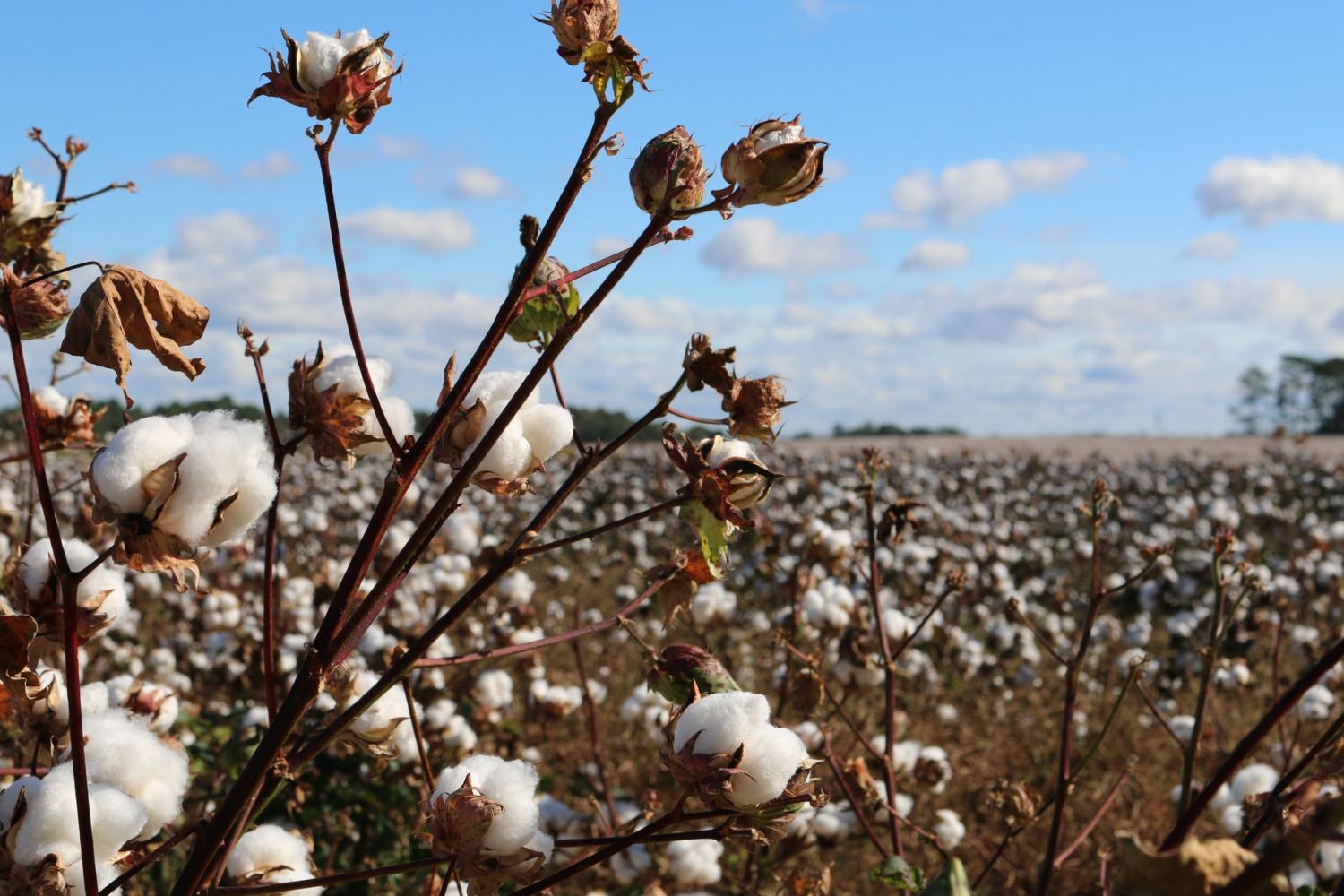
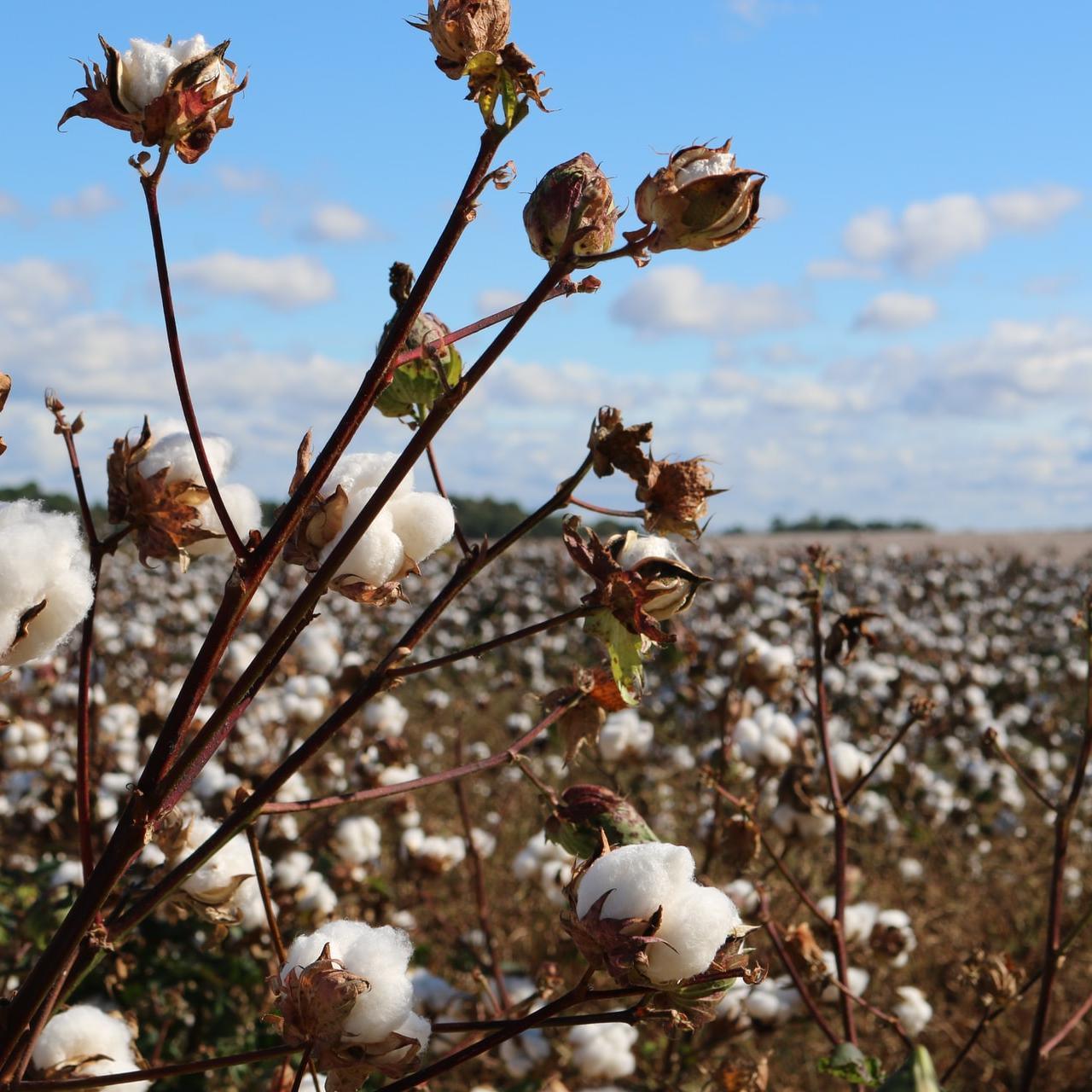
Is sustainable cotton becoming a mainstream commodity?
According to the Better Cotton Initiative (BCI), which launched its 2019 Annual Report this week, it looks to be soon. BCI reports that Better Cotton – cotton produced by licensed BCI Farmers in line with the initiative’s Better Cotton Principles and Criteria – now accounts for 22 percent of global cotton production. That is enough cotton to make approximately 8 billion pairs of jeans, a pair each for every person in the world. In addition, BCI retailer and brand members sourced more than 1.5 million metric tons of sustainable cotton in 2019, a 40 percent increase over 2018.
Given that it takes an estimated 20,000 liters of water to produce 1 kilogram of cotton, let’s hope the trend continues.
Profits, but at a cost
According to WWF, cotton is the most widespread and profitable non-food crop in the world. In fact, approximately half of all textiles are made of cotton. Cotton production also provides income for more than 250 million people worldwide and employs almost 7 percent of all labor in developing countries. However, the downside of cotton production is its well-known environmental impact. In addition to significant water usage, conventional production practices for cotton involve the application of substantial fertilizers and pesticides that threaten the quality of soil and water and the health of biodiversity in and downstream from the fields. Heavy use of pesticides also raises concern for the health of farm workers and nearby populations.
Established in 2009, BCI’s mission is “to make global cotton production better for the people who produce it, the environment it grows in and the sector's future.” Its more than 1,800 members pledge to support its seven principles and criteria, ranging from minimizing the harmful impact of crop protection practices and promoting water stewardship, to promoting decent work and operating effective management systems.
Members comprise retailers and brands — including some of the most recognized names like Adidas, Ikea, Burberry, Nike, Gap, Levi Strauss & Co., and Marks & Spencer — as well as suppliers and manufacturers, civil society groups, producer organizations and associate members. BCI says it is the world’s largest cotton sustainability program, a claim it backs up in its latest report.
Aiming for 100 percent sustainable cotton
Many of BCI’s members have set goals to source 100 percent sustainable cotton, with some already nearly meeting them.
Adidas was one of the first, announcing in 2018 that 100 percent of the cotton it used globally was either "Better Cotton" or organic cotton. Nike, which reports that more than half of its water footprint comes from cotton farming, says it is on track to source 100 percent of its cotton more sustainably by this year. In 2019, 55 percent of its cotton was certified organic, recycled or BCI, which it says has helped the company save an estimated 25 billion liters of water and more than 92,000 kilograms of pesticides from its supply chain. Target has set a goal to source 100 percent sustainable cotton by 2022 for its owned and exclusive national brands in apparel, home and essentials based on its cotton policy, which it introduced in 2017.
To help meet demand for sustainably produced cotton, BCI works with local implementing partners to provide training on sustainable agricultural practices. In 2019, it provided support to 2.3 million cotton farmers, 2.1 million of whom gained a license to sell BCI sustainable cotton based on an assessment of eight indicators designed to ensure that they are on track to meeting clearly defined standards for pesticide use, water management, decent work, record keeping, training and other factors. The greatest increase in numbers of licensed farmers was in India and Pakistan, where more than 100,000 additional farmers in each country achieved a BCI license.
Together, there are BCI-licensed farmers in 23 countries on five continents, the overwhelming majority being smallholder farmers who farm on less than 20 hectares. By the end of the 2020-2021 cotton season, BCI aims to more than double the number of cotton farmers its supports from 2.3 million to 5 million – one of five 2020 targets the collaborative has set to help meet global volume demand for sustainable cotton.
BCI admits, however, that the global COVID-19 pandemic has added an element of uncertainty, which may prevent some members from achieving their 2020 sourcing targets.
“We are committed to not only continuing to deliver beneficial change at field level, but also to learning from the experience and adapting to become more effective,” said Alan McClay, CEO of BCI. “We do not yet know how close we will come to our 2020 targets, and we are still assessing how the current COVID-19 pandemic will impact our efforts. But one thing is certain, we have made significant and undeniable progress over the past 10 years, and there are many successes to celebrate.”
Not immune to COVID-19
Like the rest of the world, the cotton sector has felt the impact from COVID-19. The world price of cotton fell approximately 20 percent from January (pre-COVID 19 pandemic) to April. In later trading, the market recovered about half of those losses, but there has been persistent price uncertainty due to the ongoing pandemic and the accumulated impact of disruptions in the supply chain. Together, these challenges present real and devastating consequences for smallholder farmers, according to BCI.
“The fact that the coronavirus is mostly concentrated in cities does not mean that rural communities have been spared,” McClay wrote in a recent BCI blog. “They may be far from the vortex of contagion, but they are also less resourced with protections against the coronavirus and adequate healthcare if they or their family members become ill.”
Together with local organizations, BCI implementing partners have stepped in to not only ensure that farmers receive training and support for the upcoming cotton season, but also food packages, safety equipment and health information about COVID-19. BCI implementing partners in India, for example, are using WhatsApp to share advice on how to stay safe in the face of COVID-19 with farmers and local communities. They are also sharing guidelines and best practices through videos and e-posters in local languages. In Mozambique, the BCI Assurance Team piloted a process using remote communications to maintain assurance activities during the government-imposed lockdown, while prioritizing the health and wellbeing of all concerned – field and partner staff, farmers, workers and verifiers.
Despite the challenges, McClay remains optimistic and focused on the future of BCI, which is poised to release its 2030 strategy in the last quarter of 2020. “Delivering positive change at farm level will remain our core focus, while we continue to scale our efforts to ensure more sustainable cotton becomes the norm.”
For the sake of farmers and the planet, let’s hope it does.
Image credit: Trisha Downing/Unsplash
Why COVID-19 Will Accelerate the Renewable Energy Transition
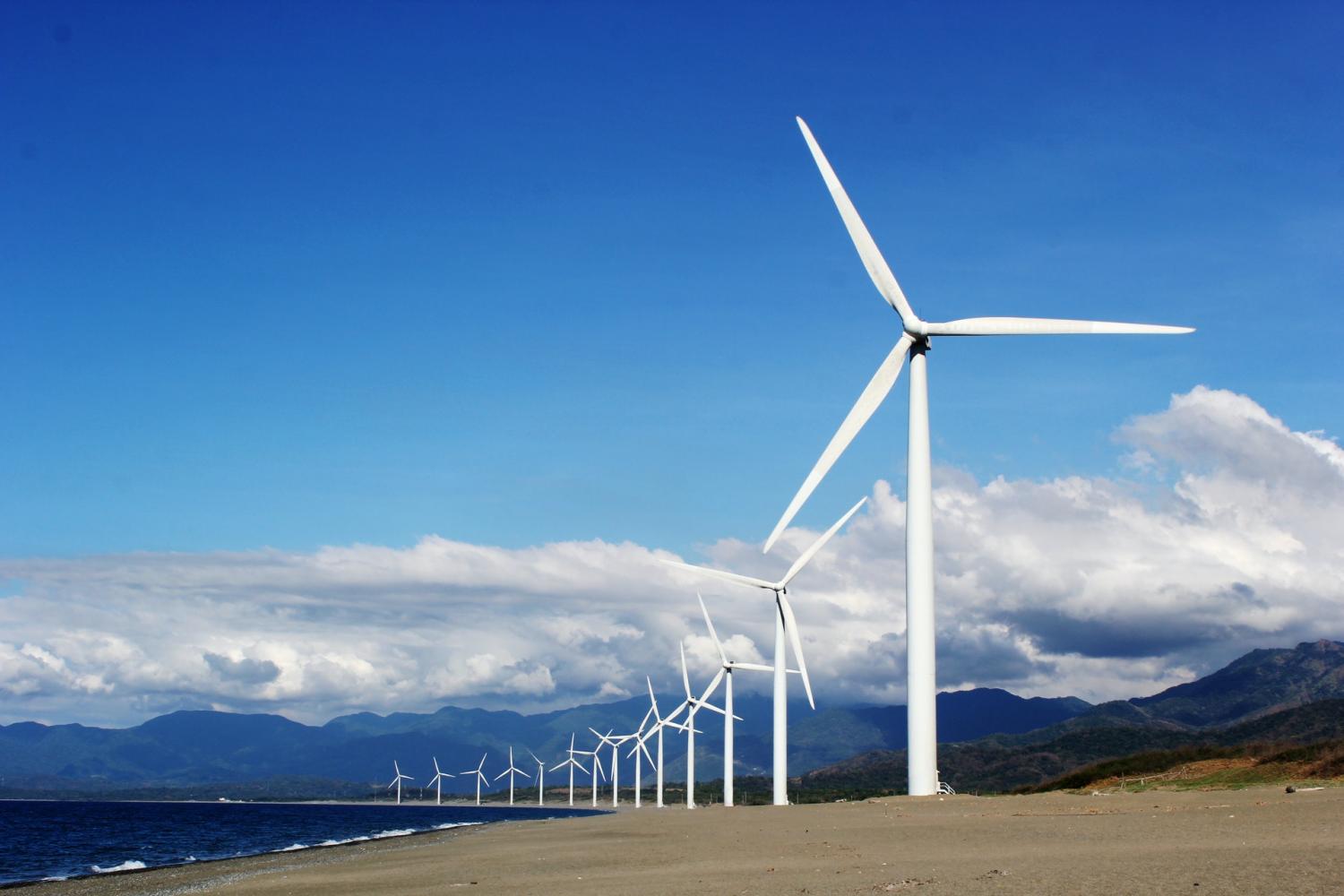
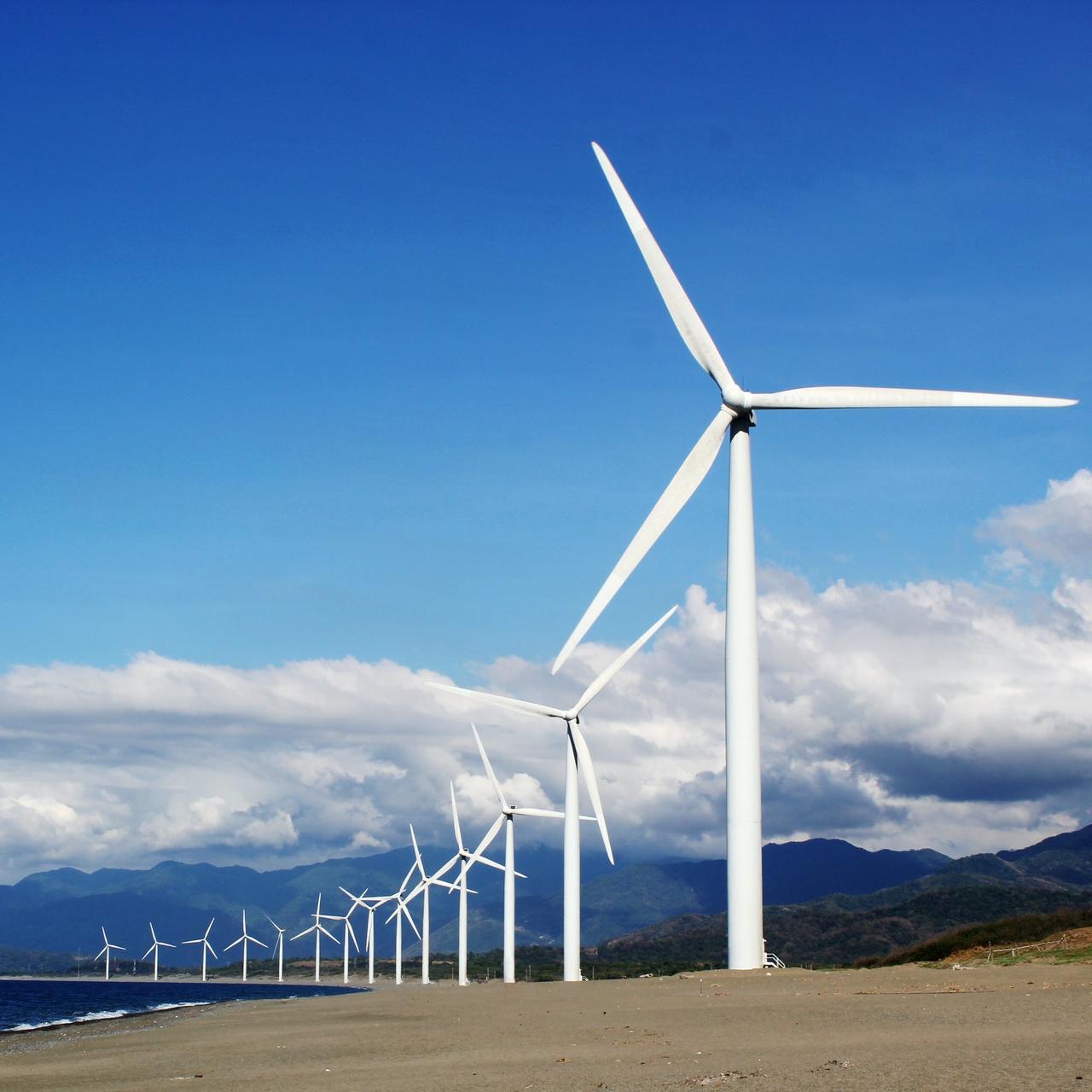
The global oil and gas market began to weaken before the COVID-19 outbreak crashed the economy, providing bottom-line motivation for BP and other industry leaders to satisfy investors by shedding assets. That maneuvering has continued into 2020, and BP illustrates why renewable energy is poised to fill the vacuum.
BP quits petrochemicals…
BP is among the oil and gas giants pivoting to renewable energy. In some ways it appears that the company is running ahead of schedule, even as the COVID-19 crisis continues to mount.
On Monday, for example, BP announced that it will sell practically all of its petrochemical business to the industry leader Ineos. The sale involves 14 plants in the U.S., Asia and Europe. BP will retain just one facility in Germany, as part of a refinery operation.
BP describes the sale as the “next strategic step in reinventing BP.” It comes a year earlier than BP’s divestment plan calls for, though the actual transaction will not be finalized until the end of this year.
…but petrochemicals do not quit BP
Selling off an asset does not make it disappear, however. BP notes that global demand for plastics will continue to support the 14 petrochemical plants, particularly in Asia.
To the extent that BP continues to supply oil and gas to those 14 plants and its remaining facility in Germany, the sale will not have an impact on the amount of carbon that BP contributes to the global load.
So, is this yet another case of greenwashing?
In some ways, yes. BP enabled additional growth in the petrochemicals field earlier this year when it licensed its petrochemical technology to the firm Weilian Chemical for the construction of a new petrochemical facility in China.
That puts the sale of those 14 other facilities in a different light. For the sake of comparison, consider what happens when a big-box retailer removes guns from its stores. There is a considerable amount of positive media attention, but the guns are still for sale elsewhere. Making an actual difference would involve destroying guns in stock, not enabling someone else to sell them.
Still, BP CEO Bernard Looney attempted to spin Monday’s announcement as a net gain for a more sustainable, circular economy.
“These businesses are leaders in their sectors, with world-class technologies, plants and people. In recent years they have improved performance to produce highly competitive returns and now have the potential for growth and expansion into the circular economy,” he said.
Kickstarting the circular economy
On the other hand, Ineos does position itself as a contributor to the circular economy. The company initially focused its recycling efforts on the waste-to-energy field, but it is currently exploring more sustainable and sophisticated pathways, such as converting plastics at the molecular level and blending more recycled plastic into virgin sources. Ineos is also working with the packaging industry to shift into plastics that are more easily recycled.
If all goes according to plan, the long-term impact of the BP sale would be to improve economies of scale for Ineos’ plastic recycling efforts. That seems to be in the cards, as the sale includes BP’s new Infinia recycling technology among other research assets.
The sale could also provide Ineos with additional bottom-line leverage to prod its value chain toward the use of products that are more amenable to the circular economy.
All in all, the effect in the long run would be to tamp down growth in demand for virgin oil and gas.
Focusing on renewable energy
On BP’s end, the sale relieves the company from pressure to make its petrochemical business more sustainable, enabling it to concentrate on its core business of producing energy and fuel products more sustainably.
In that regard, BP is preparing for the future. The company launched an ambitious plan for renewable energy almost 20 years ago with its “Beyond Petroleum” campaign, only to see it fizzle out. More recently, though, BP plunged back into the renewable energy field in partnership with California-based Lightsource bp, a leading solar company.
With Lightsource, the company plans on developing 10 gigawatts in renewable energy within the next three years.
BP is also exploring a renewable energy plan in Australia, which would leverage solar and wind power to generate green hydrogen for export. If that plan works out, it would resolve one major bottleneck in the global renewable energy marketplace and foster a massive impact on global decarbonization.
Currently, wind and solar power cannot be shipped overseas like coal, oil or natural gas. In the form of green hydrogen, though, wind and solar power are both storable and transportable. Australia has plenty of both, and access to the lucrative Asian markets as well.
The sustainable COVID-19 recovery
In and of itself, BP’s petrochemical sale is more of a baby step than a giant step in terms of global decarbonization.
Nevertheless, by shedding those assets, BP is in a better position to leverage its own economies of scale to promote renewable energy on the heels of the COVID-19 crisis.
Supporting this optimistic outlook is Looney himself. He took up the position of CEO in February, just as the COVID-19 pandemic was hitting in force.
By May, he was doubling down on BP’s new net-zero by 2050 commitment.
“I am more convinced than ever that this is the right thing to do, and we need to crack on with it,” he said. “The pandemic only adds to the challenge that already exists for oil in the medium to long term.”
Image credit: Kervin Edward Lara/Pexels
This Company is Doubling Down on Inclusive Hiring
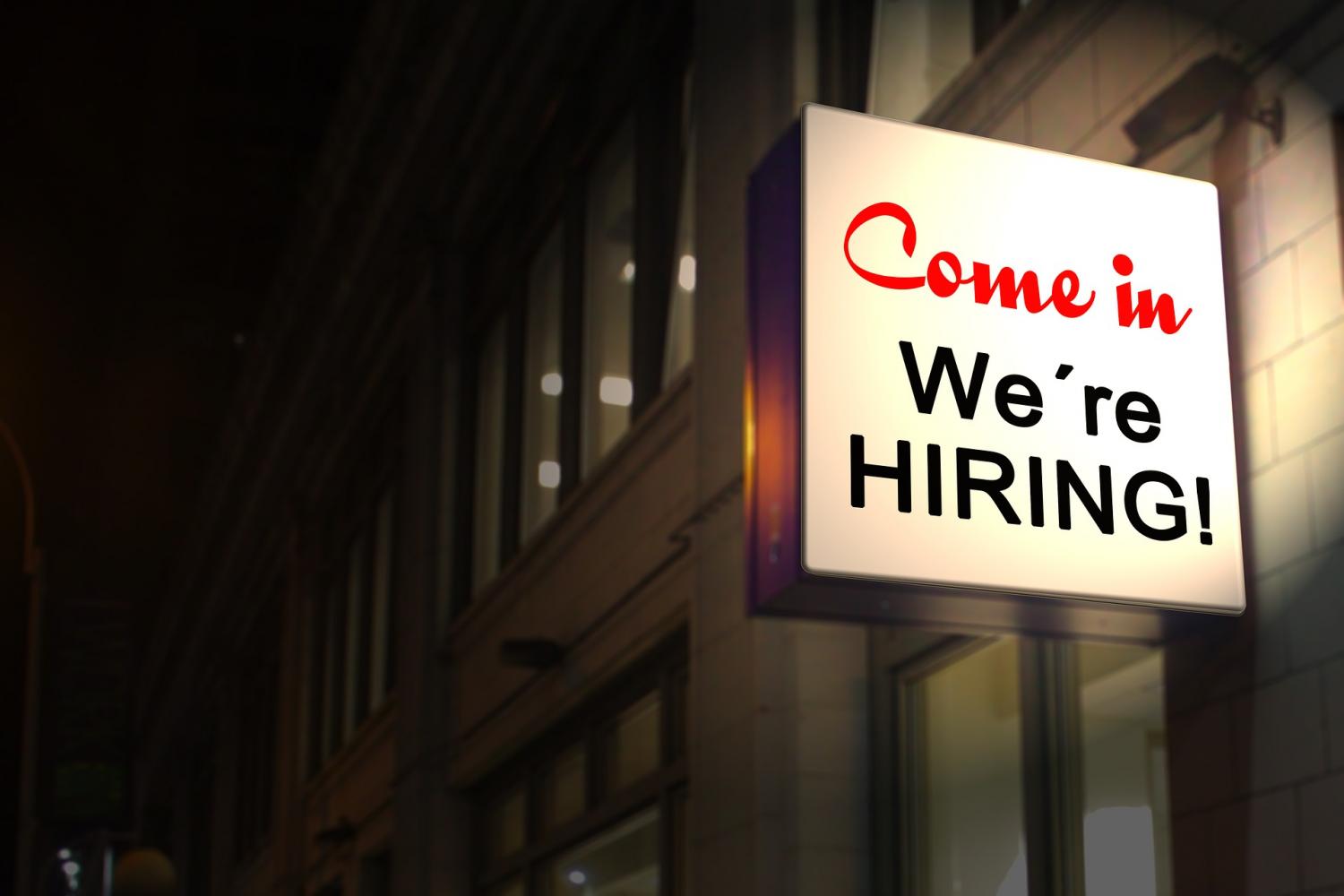
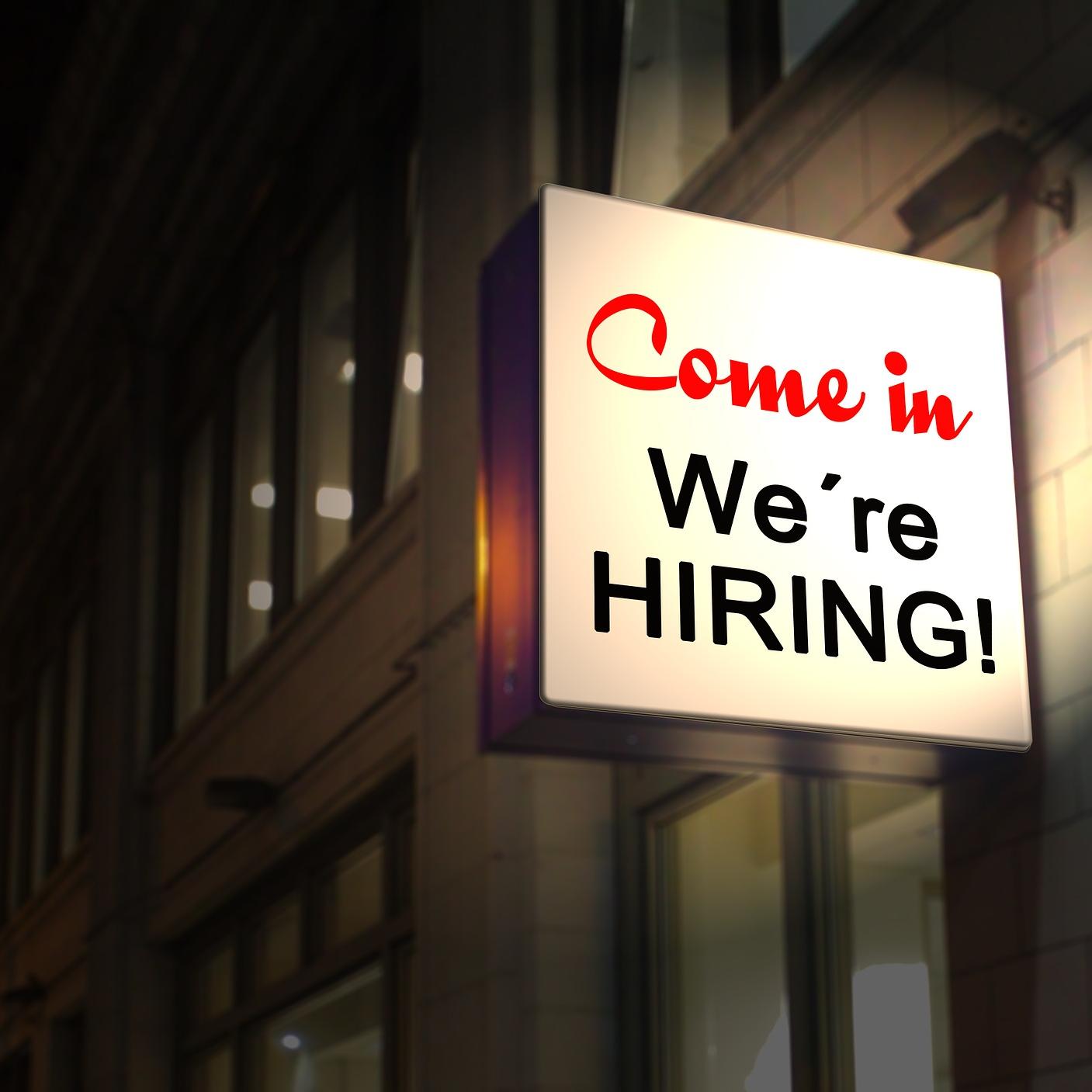
It was not long ago when inclusive hiring (sometimes called second-chance hiring) was all the rage across the U.S. In February, U.S. unemployment was at 3.5 percent, the nation was reckoning with its mass incarceration problem, and various business organizations were busting myths about what’s involved with hiring people who have criminal records. The Ban the Box campaign, around since 2003, was also gaining more supporters.
Fast forward a few months and now, almost no one is talking about inclusive hiring. And speaking of rage, there's currently a different form of it sweeping across the U.S.
One company that has not shied away from inclusive hiring despite the current crises is Greyston Bakery, which has long been churning out brownies in Yonkers, New York, and includes Ben & Jerry’s amongst its customers.
TriplePundit recently caught up with Joseph Kenner, who has been with Greyston since early 2018 and was named CEO of the company this past April. For Kenner and his executive team, no other employee engagement option exists other than inclusive hiring. From Kenner’s point of view, the convergence of COVID-19, the protests stemming from the murders of Black Americans including George Floyd, and the current economic crisis makes hiring the most vulnerable even more of an imperative, especially since many people with criminal justice histories never got a “first chance” at employment in the first place.
“If anything, when looking at the current environment, what we’re now seeing makes it more important that we find solutions to build a more inclusive economy,” Kenner told 3p.
Inclusive hiring matters now more than ever
Greyston has already gone above and beyond its mission of employing the last hired and first fired to bake brownies. Two years ago, the company opened the eponymous Center for Open Hiring, a space where business leaders can learn more about the “open hiring” human resources model. Greyston and the staff running the center are spreading the word on inclusive hiring however they can. Next, they'll host a seminar on Tuesday, July 14. The event has the goal to show leaders the value of investing in employees, “rather than screening them out.”
Open hiring seeks to turn the human resources model on its head. Most companies expend their resources screening out people. But with open hiring, companies commit to training, learning, development, benefits and a culture of support. The process is simple: In Greyston’s case, applicants are asked for the name, contact information and if they can stand on their feet for a full day’s shift. Plus, Greyston employees need to be able to lift 50 pounds, as baking 8 million or so pounds of brownies and blondies a year requires moving around lots of huge bags of flour and sugar.
Those aforementioned numbers are what Kenner focuses on, as Greyston saves the numbers for products, not people. “It’s not just about numbers, but really, opportunity and access. What does a more inclusive workforce look like for them and what tools will achieve it for them. We have the answer with open hiring,” Kenner said.
Job opportunities, more than promises, offer more value
At a time when companies are making bold statements about standing with Black Americans and promising to build more diverse workforces, Kenner and his company doesn’t have to pledge anything – it is hiring now.
“I applaud the statements that are being made by the various corporations in support of hiring more people of color. However, statements alone will not solve the problem,” he told us. “What I hope will happen is that business leaders will be more intentional about the problem they are trying to solve. And then, how will they measure their impact?”
As corporate America has decided to march in lockstep with the protestors flooding the streets in American cities and towns large and small, it’s easy for nagging doubts to cross one’s mind as they read more press releases and promises. Kenner came across during the interview as hopeful, optimistic, yet guarded.
After all, it’s easy to promise — the hard part in business is the delivery. “What is the timeline for measuring their impact? And then what are the metrics of success? Because of the central role businesses play in our economy, management teams can have an immediate impact by accessing the one lever that they control: hiring. You don’t have to ask for anyone’s permission; just open the door.”
Diversity pledges aren’t enough to take on systematic failures
At a time when government is flailing and other institutions are hamstrung by the lack of funds, the reality is that the closest things they have to boots on the ground are Zoom and other video conferencing services. Hence business can step in and lead during this crisis with its collective pocketbook.
At the moment, vague promises to change by 2025 are not enough. For workers who are willing to put in the hours, such long-term plans won’t help them at all. “What we’ve got to do is going beyond addressing the symptoms and address the disease; right now, many folks don’t have opportunity and access. It’s a merry-go-round until you address these core issues,” Kenner added.
After decades of imprisoning people at increasing rates, approximately 1 in 3 U.S. adults currently has a criminal record that would appear on a routine background check. Promises alone will go nowhere close to putting a dent in that statistic, but a more open hiring system, such as the one that has worked out well for Greyston, is certainly a start.
Image credit: Gerd Altmann/Pixabay
NRDC Shames Facebook on Racism and Climate Change
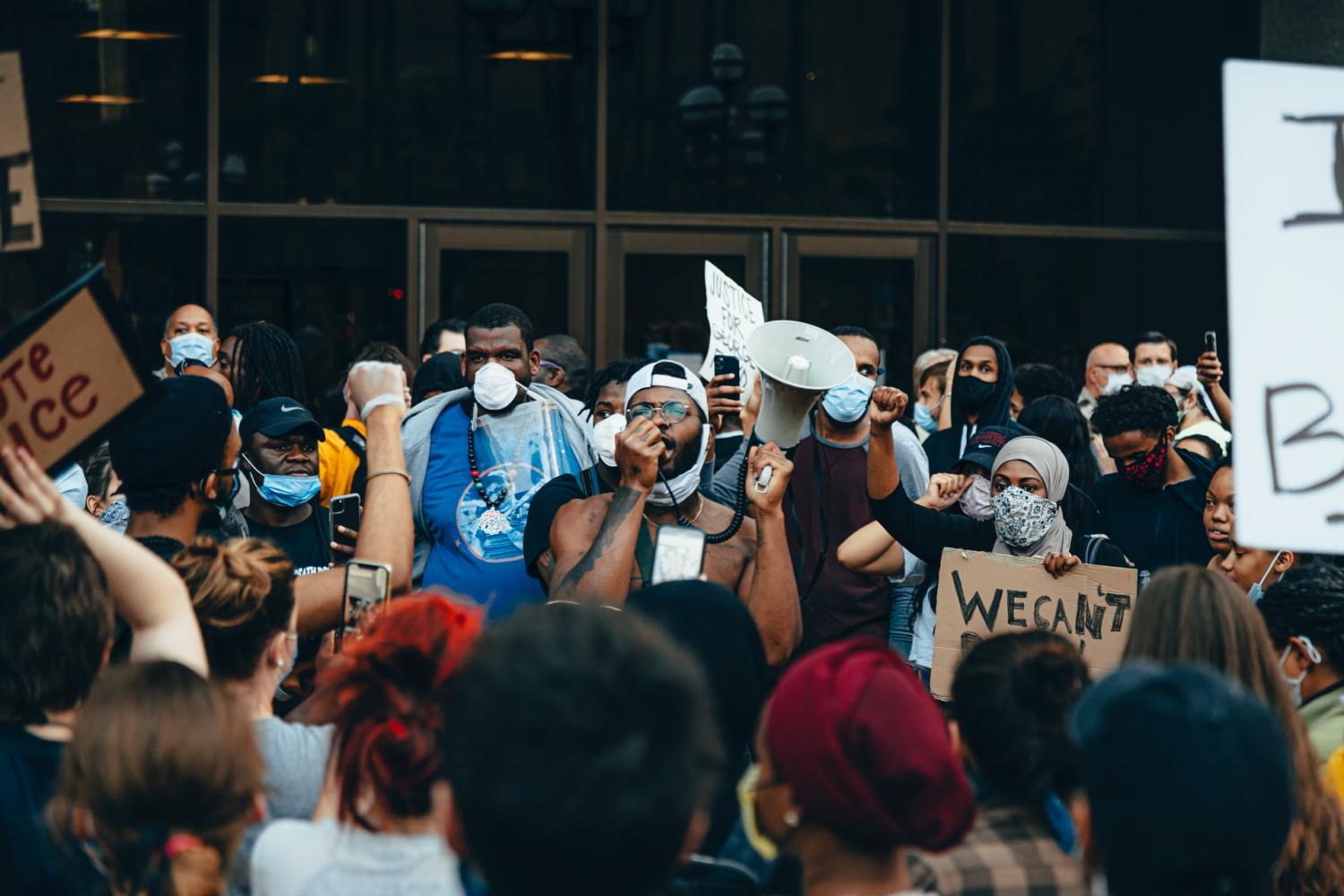
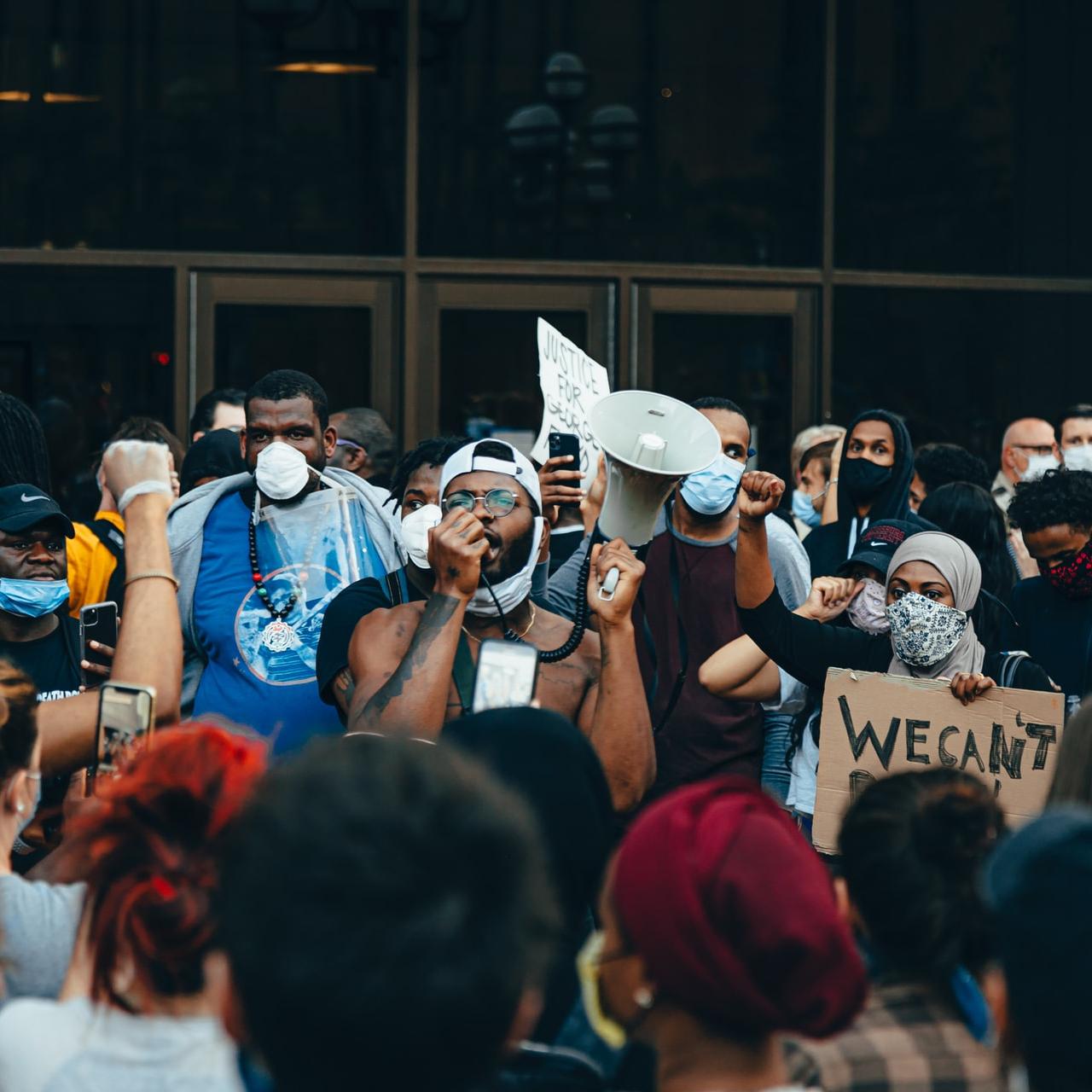
The Facebook advertiser boycott called #StopHateForProfit has been gathering steam all week, and over the weekend a powerful new element entered the mix. The Natural Resources Defense Council announced that it is joining an organized campaign in support of the boycott. In doing so, NRDC has brought renewed attention to climate and environmental issues as they relate to structural racism, including voter suppression.
NRDC, environmental justice and voter suppression
The environmental justice movement is closely linked to voter suppression. It is no accident that communities of color bear the brunt of environmental hazards and are more likely to be targeted for voter suppression, such as gerrymandering and the removal of polling places. Communities that cannot vote in full force have less — or no — control over environmental policy on a local, state or national level.
NRDC drew attention to that connection last week when it criticized a state environmental agency for signing off on a permit that would enable a “notorious polluter” to relocate its Chicago metal recycling operation. The move would take the company, General Iron, from the affluent Lincoln Park area to a Southeast Side neighborhood described as a “working class community of color.”
General Iron has been frequently cited for dust and other violations in past years. Nevertheless, NRDC noted that the proposed new site would be only a few blocks away from the local high school, which has already “registered the highest levels of several harmful metals in the state in recent years.”
Southeast Side resident Gina Ramirez, who is NRDC’s Midwest outreach manager, describes the permit as an illustration of ongoing structural racism.
“This is the typical environmental racism that our community is sick of facing year after year,” she said in a press statement. “Lincoln Park neighbors have been fighting this facility for years. If it is not good enough for that neighborhood, why is it good for the Southeast Side?”
As of this writing, Southeast Side activists are hoping that the Chicago Department of Health will step in and deny a permit to General Iron.
Climate change, COVID-19 and Facebook
The environmental justice aspect of climate change has been coming into sharp focus during the COVID-19 pandemic. In particular, the pandemic has steered attention onto the relationship between air pollution and risk of both climate impacts and health risks. It has also underscored other climate-related vulnerability issues including financial stress and lack of access to affordable health care in communities of color.
That, in turn, reflects on the role of Facebook in spreading disinformation about climate change.
In 2018, for example, the progressive news organization ThinkProgress reported that the problem involves more than simply giving free rein to individual posters. [Note: ThinkProgress ceased operations in 2019].
“Zuckerberg is partnering with a right-wing media outlet that spreads climate disinformation to fact-check stories," reporter Joe Romm noted, “And he recently brought in a right-wing think tank that spreads climate disinformation to figure out whether Facebook displays a liberal bias.”
Environmental groups pressure Facebook to act
Given this context, it makes sense that NRDC would jump on the opportunity to join an organized boycott aimed at pressuring Facebook to reassess its policy.
“Whether it’s hateful, racist and violent propaganda, disinformation to disrupt safe & fair elections, conspiracy theories about the global pandemic or anti-science climate change denial, Facebook must improve its policies and stop the spread of verifiably false information,” NRDC stated in a June 27 Twitter post announcing that it would join the #StopHateForProfit campaign.
The organization EarthJustice also joined #StopHateForProfit on June 27, tweeting that “we must end the suppression of Black voices online.”
The #StopHateForProfit campaign
The inclusion of NRDC and EarthJustice broadens the scope of the #StopHateForProfit campaign. It launched on June 17 with a focus on civil and human rights under the umbrella of the Anti-Defamation League (ADL), calling for a month-long boycott of leading Facebook advertisers in July.
The launch members were NAACP, Sleeping Giants, Common Sense, Free Press and Color of Change.
ADL and other civil rights groups have long excoriated Facebook over a hands-off business model that nurtures extremism, including Holocaust denial among other issues related to white supremacy.
In 2018, NAACP called for a weeklong Facebook user boycott after new evidence surfaced that the company had enabled the data firm Cambridge Analytica to engage in a voter suppression campaign targeting Black voters during the 2016 election cycle.
The new campaign zeroes in on the relationship between white supremacy and voter suppression.
In a launch advertisement in the Los Angeles Times, the campaign outlined its case for an advertiser boycott, drawing attention to the $70 billion Facebook earned from advertising in 2019, which accounted for 99 percent of its revenue.
“What would you do with $70 billion?” the ad asked. “We know what Facebook did…They amplified white nationalists by including news sources with known extremist ties in their ‘fact checking’ program. They turned a blind eye to blatant voter suppression on their platform.”
“Could they protect and support Black users? Could they call out Holocaust denial as hate? Could they help get out the vote?” the ad continued. “They absolutely could. But they are actively choosing not to do so.”
The connection to environmental issues began to emerge even before NRDC and EarthJustice joined, as the campaign quickly began garnering support from corporate leaders.
The North Face appears to be the match that lit the fire. On June 19, the company retweeted NAACP President Derrick Johnson's statement of support for #StopHateForProfit, which read in part, “It is clear that Facebook and its CEO, Mark Zuckerberg, are no longer simply negligent, but in fact, complacent in the spread of misinformation, despite the irreversible damage to our democracy.”
Patagonia followed suit, and by June 22 REI also joined in, along with other brands that cultivate an outdoorsy or activewear image including Dockers, Eddie Bauer and Lululemon.
As of this writing, the #StopHateForProfit is rapidly approaching the 100-company mark, most notably including several global firms that are actively engaged on green COVID-19 recovery and other, long-term climate and sustainability issues.
Among that group are Coca-Cola, Levi Strauss, The Hershey Company, Unilever and Verizon.
But will it work in time for Election Day?
Industry observers have already pointed out that Facebook will probably not suffer a noticeable drop in advertising revenue once the dust has settled.
However, the campaign could have an outsized impact on investors.
Market watchers were already noting weakness in Facebook's stock performance earlier this year, which some attributed to additional expenses that the company incurred after 2018 when it began taking steps to regulate content.
As a possible sign of things to come, last Friday the company’s stock dropped more than 8 percent on word that Verizon and Unilever had joined #StopHateForProfit.
Facebook’s hands-off business model is finally catching up to it. Either it will lose revenue by failing to address voter suppression and hate speech, or it will take on additional expenses that chase investors away.
The company is caught between a rock and a hard place as Election Day looms ahead, and it will be interesting to see which direction it takes.
Image credit: Josh Hild/Unsplash
COVID-19 Leaves CEOs Unscathed While Essential Workers Are Left Unmasked
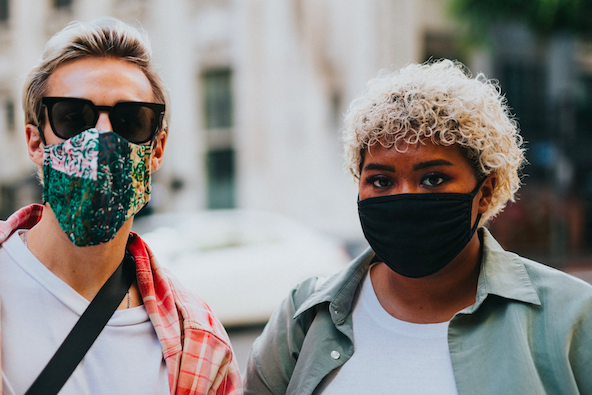
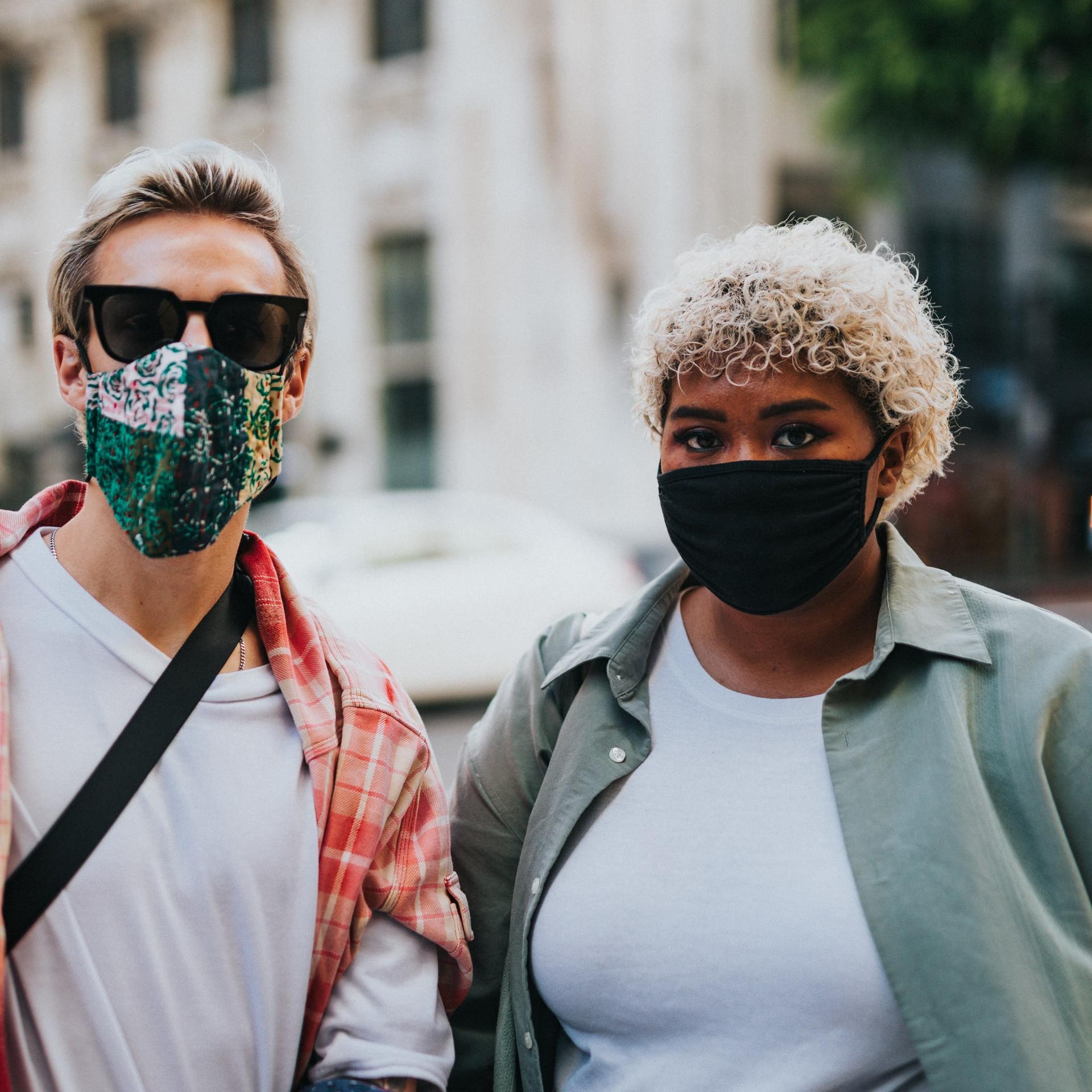
As the COVID-19 crisis lurches into its fifth month of continued public health and economic chaos, one theme has become clear: This pandemic has exposed fissures across society that have long been evident. Over the past few months, the Band-Aid has been ripped off, leaving those wounds exposed and, now, they're much more difficult to ignore.
Sudden self-awareness about race relations is no guarantee of fair and transparent hiring
Take race relations in the U.S. A recent survey from Just Capital revealed that about two-thirds of the largest U.S. corporations have released statements saying they “stand” with their Black employees and the wider Black Lives Matter movement. But only a little more than half of the same companies have publicly disclosed the racial and ethnic breakdown of their workforces.
The result is that the steady stream of promises to boost diversity hiring by 2025 ring hollow. Even worse, as Nihar Chhaya summed up yesterday in Forbes, “The burden of increasing awareness about the issues that diverse employees face continues to fall on the shoulders of the excluded group, rather than placing the onus on those in power to recognize their privilege and drive change.”
Aside from the moral and fairness issues surrounding how companies hire and retain their workers, researchers at Just Capital argue that these companies are leaving money on the table. The research team looked at a 12-month period ending on May 31 and concluded companies that have fully disclosed their demographic makeup outperformed their less transparent peers by 6.1 percent.
Essential workers still unprepared, overlooked and forgotten
If there were to be a time capsule buried today that sums up how COVID-19 hit the U.S., it would contain handmade face masks, an empty bottle of hand sanitizer, magazine covers of Jeff Bezos and perhaps a thumb drive full of “Karen” memes. First, the pandemic has accelerated inequities as most well-off are overall better off. Various headlines have showcased how many of America’s billionaires have actually reaped financial gains during this pandemic. Forbes reported that 10 billionaires generated another $23 billion in gains in one week.
Meanwhile, the bold promises to “stand” with essential workers in industries like logistics, food service and retail are largely in the rearview mirror. For now, the trust is still there; a Just Capital survey taken in partnership with The Harris Poll found that 60 percent of Americans believe companies are doing what they can to secure the health and economic well-being of their employees. And 90 percent agree this crisis is an opportunity for America’s largest companies to “reset” and do everything they can to cement good relationships with their stakeholders.
For many frontline workers, however, the reality is far different. Just Capital’s research found that only a little more than a quarter of the large companies it surveyed provided employees with personal protective equipment (PPE) at no charge. Less than a third of these same companies revealed any new paid sick leave policies in the wake of COVID-19.
COVID-19 begs for a full reset across society
Granted, Just Capital’s research is one snapshot of how corporations and the people leading them are performing during the COVID-19 crisis. Nevertheless, the message is clear: The current economic system in which we are now living is far from succeeding, and corporate executives need to watch their back, as citizens still have their eyes focused on how companies are behaving during this pandemic.
Plenty of room for improvement exists when it comes to social and economic fairness, and the business community is in a position to make things better for everyday Americans — if it is ready to take on a massive reset.
Image credit: Nathan Dumlao/Unsplash
Some Clean Power Is Coming at the Expense of Human Rights
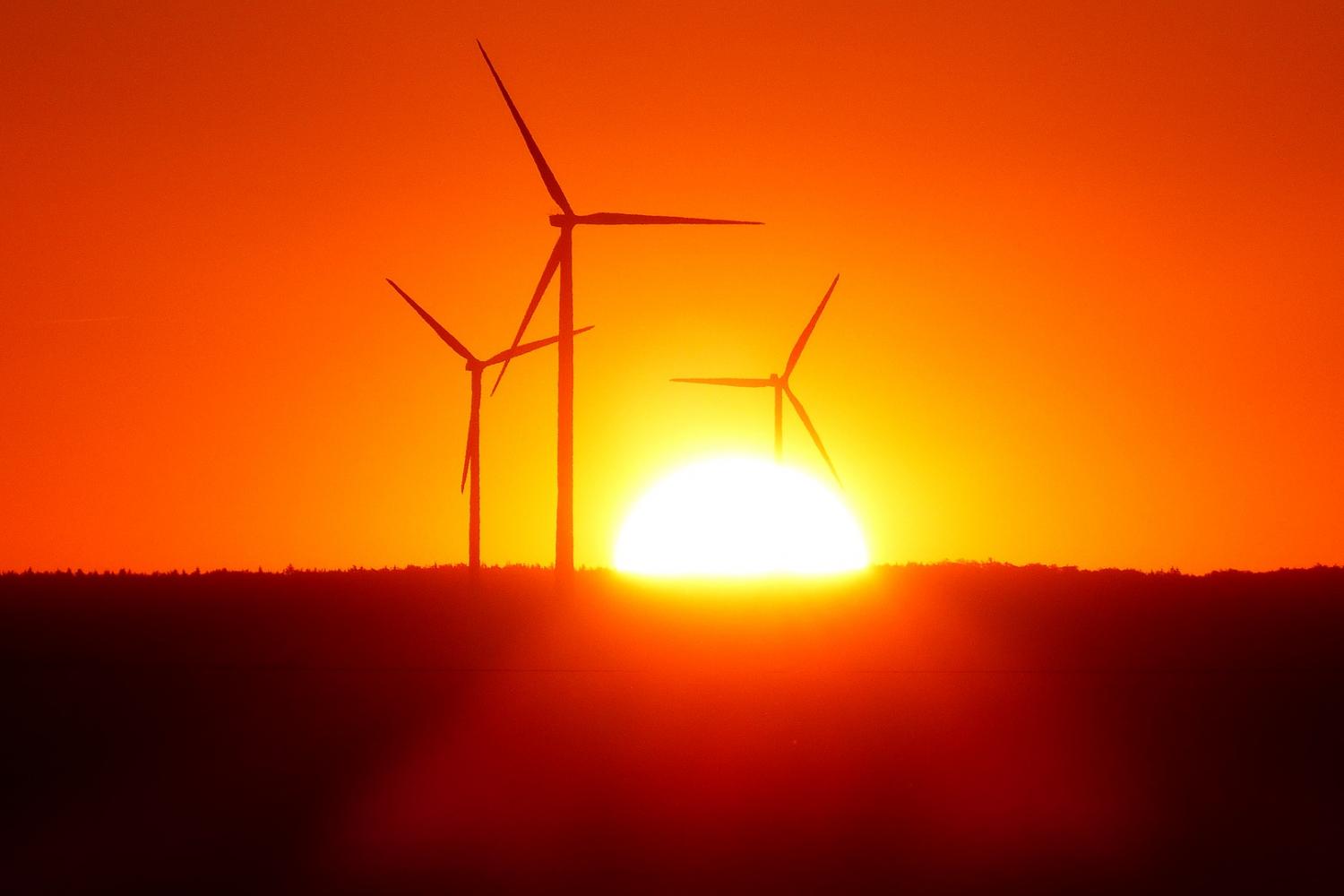
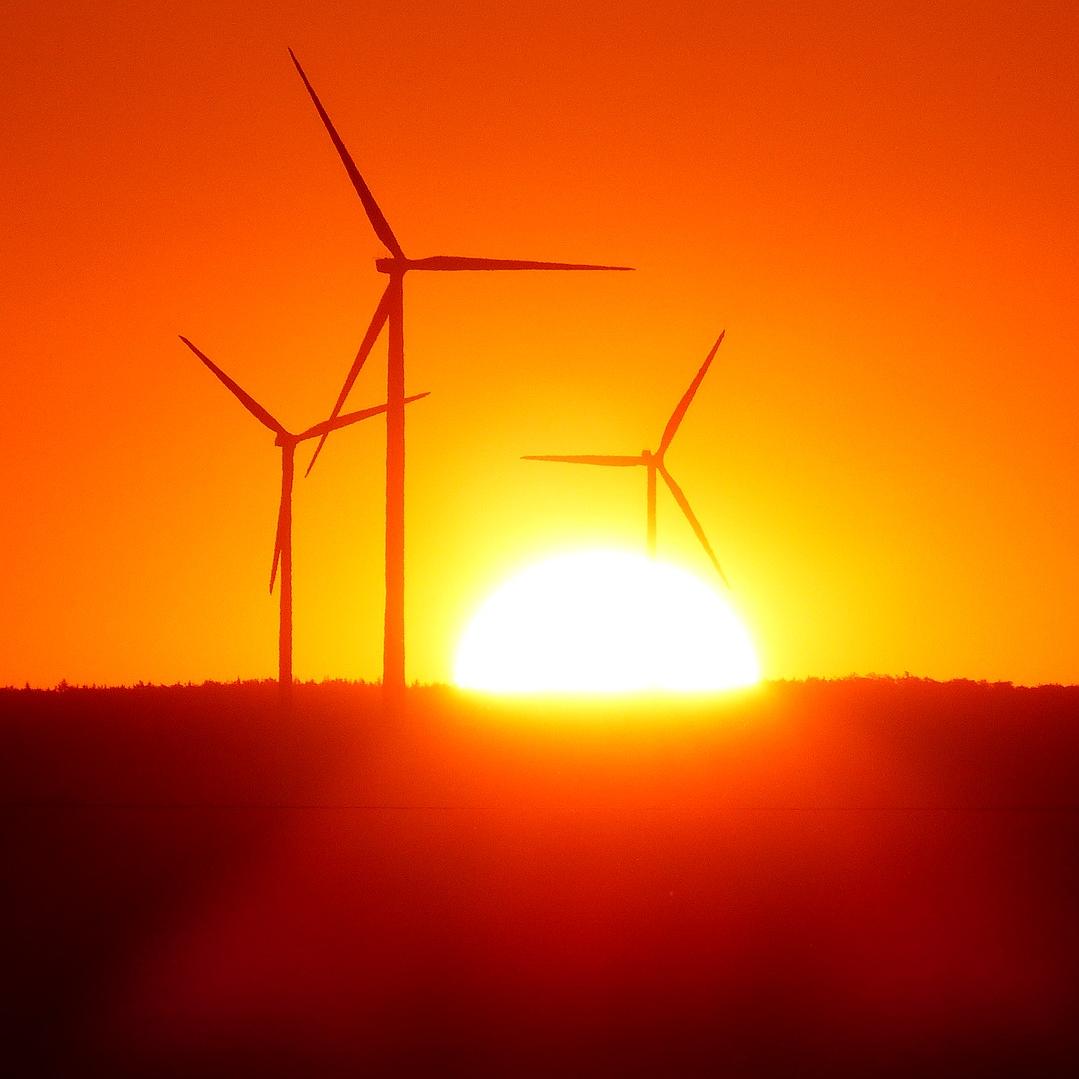
A new study by the Business and Human Rights Resource Centre (BHRRC) has found that the clean power sector is falling short on human rights indicators, especially land rights and Indigenous peoples’ rights. The report notes that 188 allegations of human rights abuses have been made in the past 10 years, and of the companies that responded to requests for data on human rights, only one of them had made a public commitment to protect Indigenous rights.
All companies should be held to the same human rights standard
Renewable energy has an essential role to play in addressing climate change. To some extent, clean energy has been relatively less politicized than climate change policy as a whole. Regardless of where one falls on the political spectrum, creating new and robust economic development opportunities appeals to policymakers. Further, as both solar and wind power reached economic parity with traditional fossil fuels, investing in these clean energy resources made more sense from both a climate perspective as well as a financial one.
Before the pandemic, clean energy jobs were among the fastest growing in the U.S. While over 600,000 clean energy jobs have been lost since March, it is critical that the strides that have been made to install more renewable energy not be lost. But at the same time, the renewable energy sector needs to ensure it is developing new projects responsibly.
Similar allegations abound in other high-risk industries like agricultural products and mining. Traditional energy companies have a long history of ignoring concerns of Indigenous communities, and unfortunately some renewable energy companies are following suit. Considering that renewable energy is a sustainable economy industry, in theory, shareholders should be more willing to hold companies to a higher standard for accountability. This benchmark study hopefully paves the way to enable that to happen going forward.
Indigenous rights have come under attack
Opposition to the Dakota Access Pipeline by the Standing Rock Sioux Tribe, among others, has been a high-profile case for years, resulting in a victory for Standing Rock in March 2020 when a judge ordered an environmental review of the project. But Dakota Access is one among several other cases going on in protest to traditional energy projects that have a direct impact on Indigenous communities. The renewable energy industry is not immune to these protests either.
According to BHRRC, 50 percent of complaints by Indigenous communities against renewable energy companies were in Central and South America, and 28 percent are in Asia. But developed countries cannot let themselves off the hook: Many allegations are also against countries in Europe and North America. Norway’s Sámi people have opposed wind farms on traditional herding lands. Further, Indigenous leaders in Canada say that U.S. demand for clean energy in the form of hydropower is damaging traditional hunting grounds and seeking little to no input from the communities themselves.
The path forward for human rights and renewables
As an industry seeking sustainable solutions to one of our most intractable problems, considering the impacts on humans must be part of the equation. If done right, renewable energy could act as reconciliation between Indigenous communities, industry and government. Partnering with Indigenous communities to make decisions appropriate to the traditional and future needs of the people could enable them not only to have emotional ownership in the projects, but possibly provide a pathway to greater economic opportunity. This is especially important as some indigenous communities struggle to maintain economic viability.
As with climate justice, the most effective solutions to the climate problem will need to be more inclusive and diverse. The communities that are disproportionately affected should have a say in the solution, but they are more likely to understand the nuanced impacts on the ground. Some companies understand this and are partnering with Indigenous communities in powerful ways. Projects including wind farms in Mexico and South Africa and several wind and solar projects in Canada that are owned by the affected Indigenous communities can provide opportunities that may not otherwise exist.
In a moment when we are talking about historical racial injustice, we must also talk about solutions. Renewable energy companies have an opportunity to be leaders in this space. At the very least, they should not continue the injustice of the past.
Image credit: Hans Braxmeier/Pixabay
Diversity Shouldn’t Mean Asking People to Work for Free
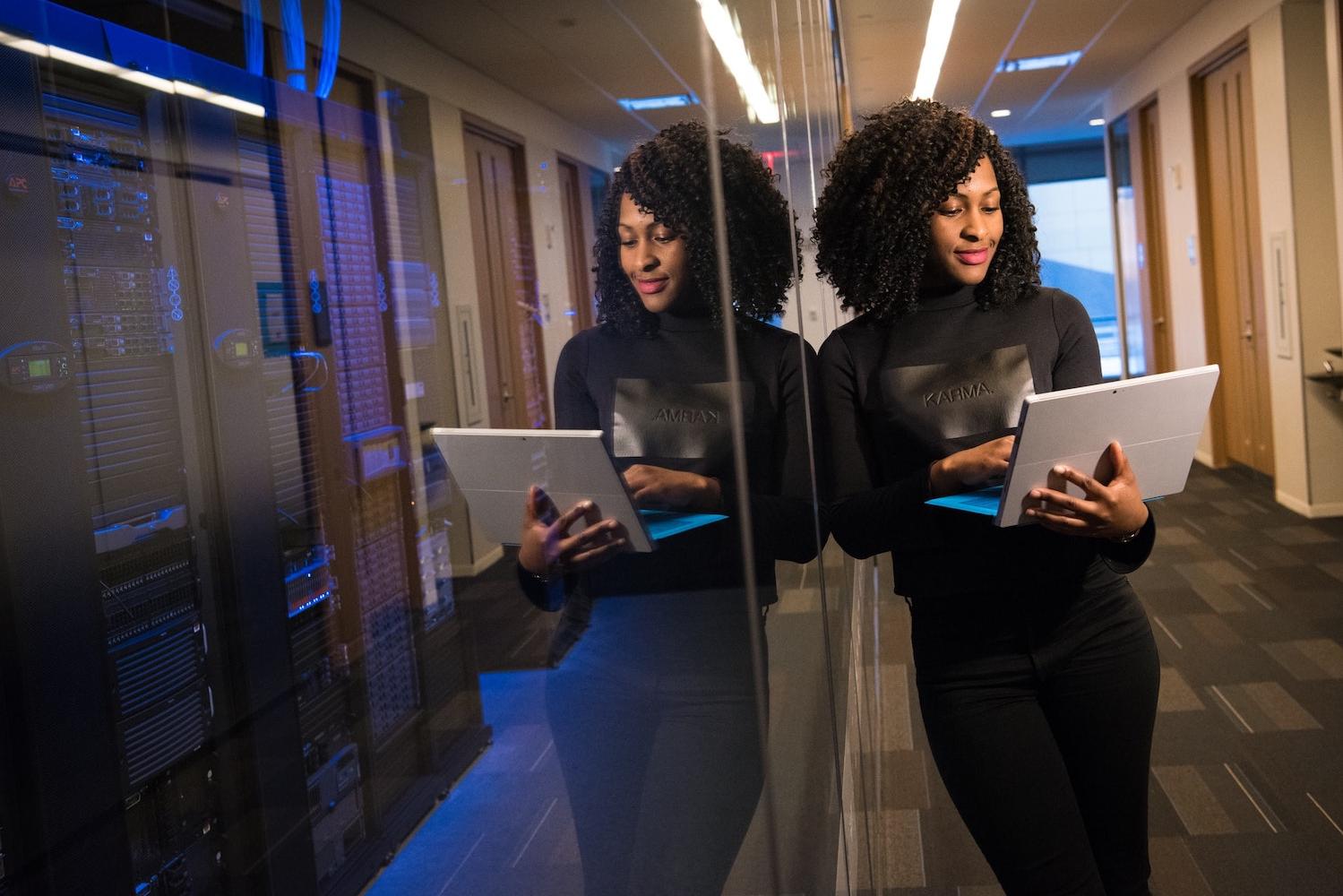
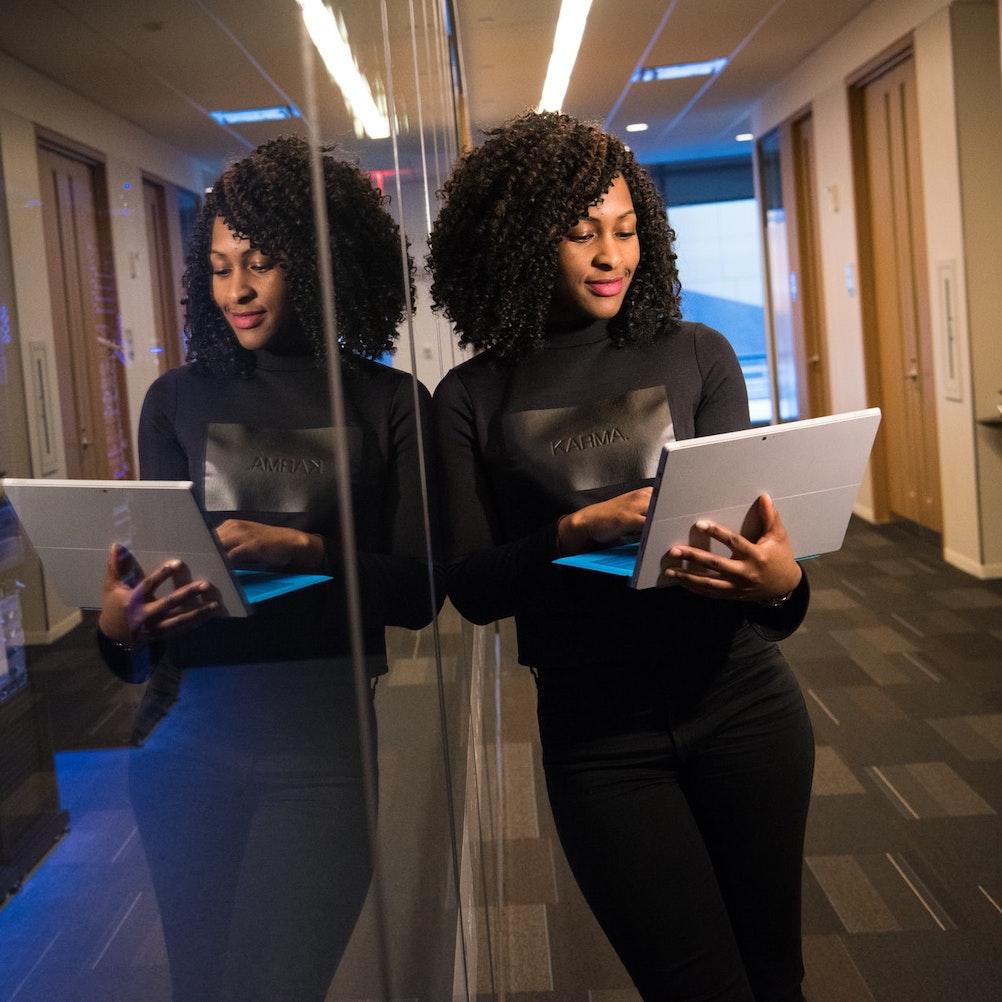
It’s overwhelming for many Black Americans to be inundated with questions about their take on race relations during the COVID-19 pandemic and as the chorus to defund the police grows louder, especially during the era of Google. After all, many of those questions can be answered with a few Web searches and the reading of a few well-argued, well-written articles. Suddenly, white people are discovering their one Black friend could be a font of information of anything related to racism, diversity, inclusion or even the Confederacy.
Stop asking your one black friend, please
Imagine being that one Black friend if he or she is also an employee of a large company. “First, do not inundate your black colleagues with requests to help you understand and solve racial injustice as if it is their duty,” wrote Najoh Tita-Reid on Fortune earlier this month. “Remember that in many workplaces, we are outnumbered — and so many people are asking us for our input right now.”
Speaking of input, companies are adding to this emotional toll as they boast about their donations to the Black Lives Matter movement and other proclamations to “stand” with the Black community. For some, these follow on efforts over the past several years to improve diversity credentials through the work of committees usually called “employee resource groups,” or ERGs.
But there’s an ugly side to some of these ERGs, along with concurrent pledges to improve a company’s diversity and inclusion efforts. Many corporate CEOs, who quite frankly are in part where they are because they are the beneficiaries of straight white male privilege, get the credit and public relations points for launching or accelerating these diversity agendas. Such accolades, however, come at the expense of Black employees tasked with running these ERGs, a devotion of time they often end up giving for free.
An honest discussion of race doesn’t mean diversity hiring by 2025
This has got to stop, along with the sudden wave of copycat pledges to hire more Black and other nonwhite employees and executives by 2025. Here’s the memo to companies: You can hire these hardworking and talented professionals as soon as possible, so there’s no need to wait five years. And in any event, considering the state of the economy with this first wave of the novel coronavirus only becoming worse, those promises ring hollow. So, stop making them, and start hiring, now.
What’s occurring within many companies is really not fundamentally different from the legacy of slavery in the U.S., or what is going on with our system of mass incarceration that films such as Ava DuVernay's 13th have expertly distilled. Employees often join ERGs out of a sense of mission and purpose. They are asked to do everything from launch new diversity and inclusion initiatives, to speak on conference panels, review product launches and evaluate local civil rights groups for potential donations. The reality is that they’ve got to do this: If such work is not done, then these same employees run the risk that their voices are not heard.
As one Silicon Valley consultant summed up in a recent article on the Washington Post, “We joined the ERG because we needed help, but we became the help.”
Black professionals do the work, white execs get the credit
The result is a vicious cycle. White executives often get the credit for good diversity deeds. In addition, external public relations firms, tasked with communicating these initiatives (fact: the reps sending these emails out are almost always white), profit off of people’s work that has been done for zero compensation.
The same Washington Post article noted that within the tech industry, some companies are beginning to realize that such work indeed merits compensation. But at a time with high unemployment and an economy teetering near collapse, the odds are high that many Black employees, and many other people of color, feel as if they have to take on this ERG workload, or else risk losing their jobs. Or, they may even be told their time spend on ERG work is interfering with their day-to-day job duties. Either way, companies that pride themselves on innovation can do better when it comes to finding more thoughtful and innovative ways of how they can treat people of color — and that starts with fair compensation.
Reactions to the Post article on social media suggested this is not a problem relegated to tech companies.
“This problem isn't exclusive to Big Tech. U.S. companies and orgs, including those in science and environmental spaces, are also maintaining largely white upper ranks and expecting employees of color to essentially work two jobs while only paying them for one,” wrote one Twitter user.
The office is still too alienating for too many people
Other industries have revealed similar episodes of egregious behavior. Earlier this month, Bon Appetit contended with accusations that it only paid white editors for time spent on filming videos for blogs and social media, while people of color in similar job positions were compelled to do it for free. The magazine’s parent company, Condé Nast, denied the accusations, but the Band-Aid masking a culture of white privilege was ripped off as Bon Appetit's former editor-in-chief, Adam Rapoport, resigned after photos of him in blackface emerged.
Even before the past several tumultuous weeks, it’s been clear a reset in the office is needed. The challenge many companies now face is that their sudden emphasis in taking on race, whether it’s becoming more “woke” or pledging to hire more people of color, the results come across as tone deaf. As one TriplePundit reader recently emailed to the newsroom, “There's a literal mad dash to hire POC employees and people are getting a ton of unwanted outreach, which I also feel doesn't help the situation. It doesn’t feel good to have been pursuing roles in a certain industry for years, but now you're getting all these calls because companies want to meet a quota or tokenize you.”
Image credit: Unsplash
To Drive Financial Inclusion, Businesses and Nonprofits Must Come Together, Says This Executive
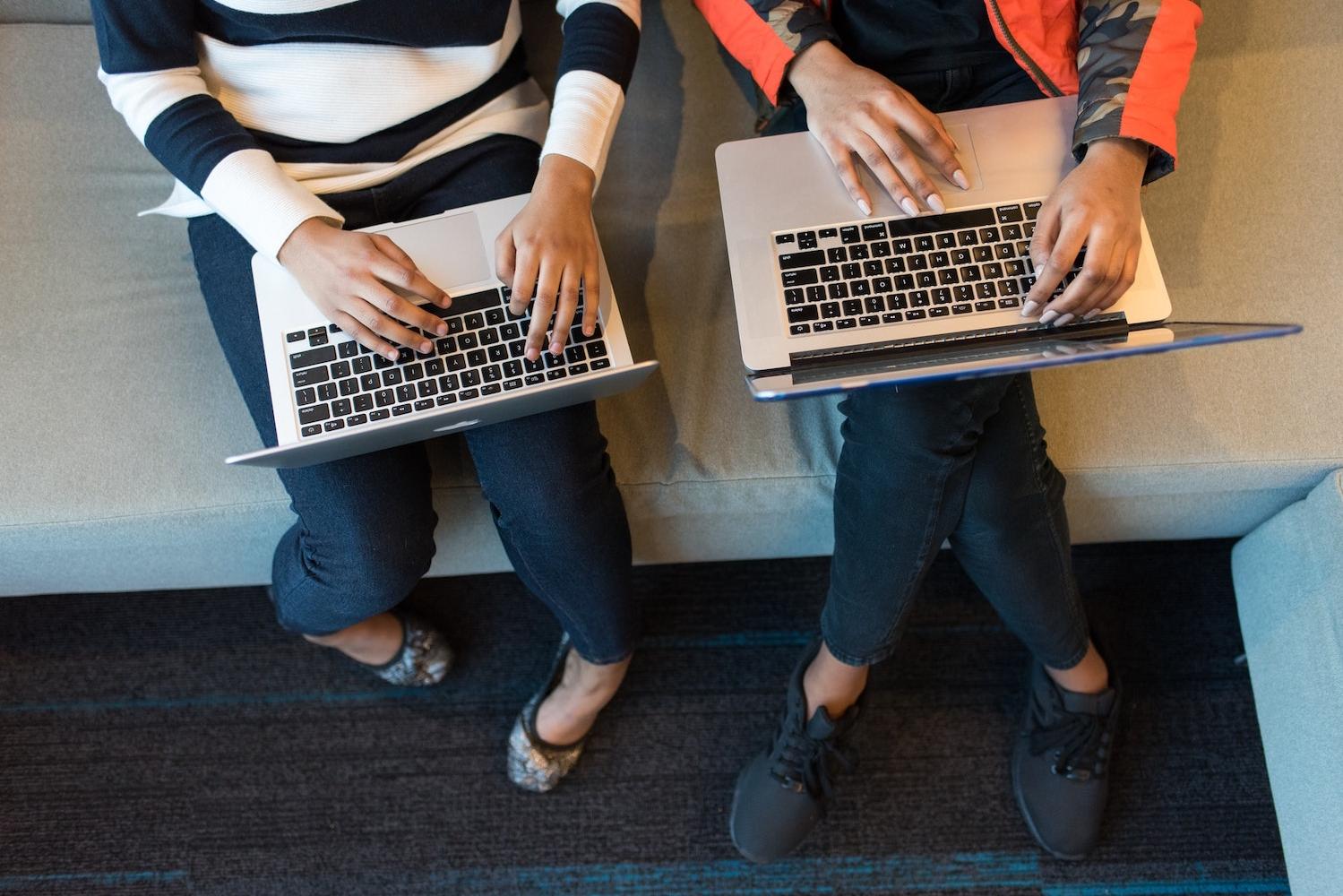
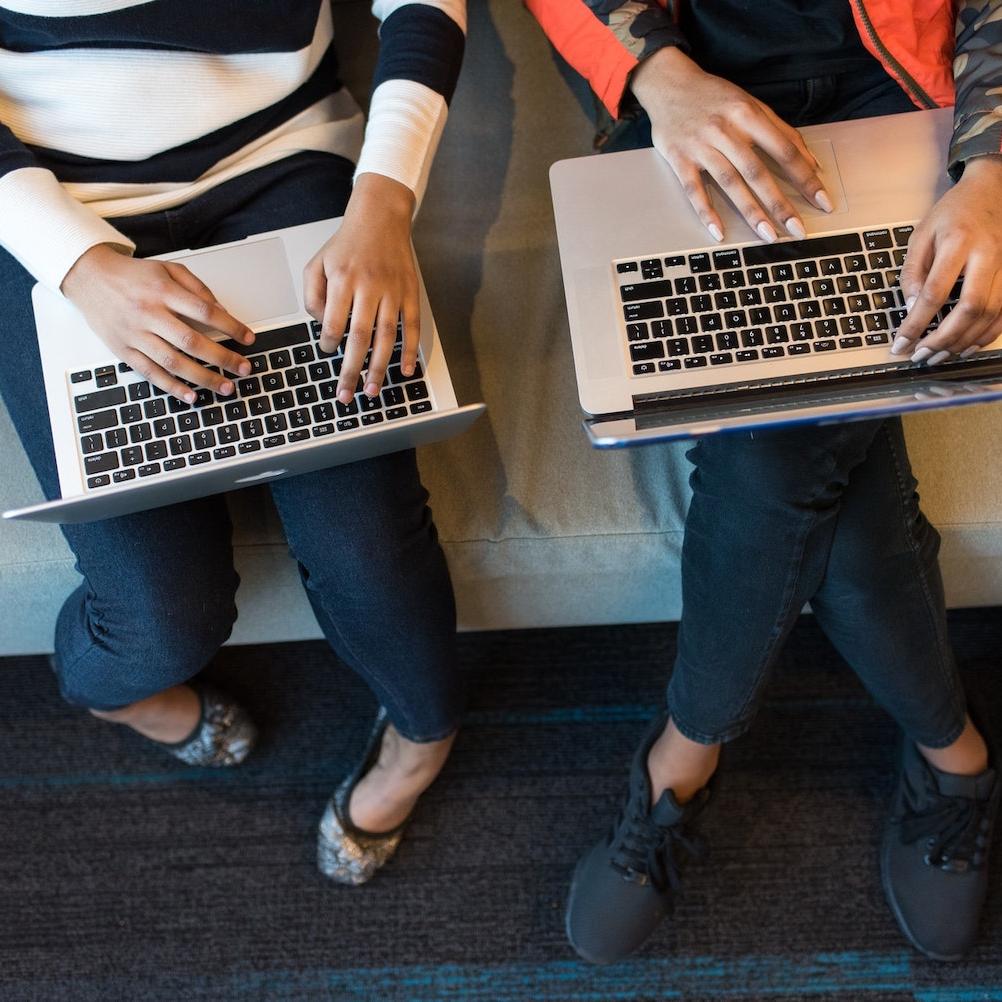
For Theresa Bedeau, senior manager for community development banking at Capital One, the racial wealth gap is not some distant concept — it’s personal.
“I grew up in New York City, in the Bronx, and I understood the impact of lack of financial inclusion in my own community,” she says. “My neighbors’ lack of economic mobility was not due to any individual shortcomings, but the reality in which we had to navigate our world, which had unequal access to opportunity.” Her firsthand knowledge of how financial barriers can limit people’s prospects has made Bedeau a champion of driving financial inclusion among communities that often go underserved.
Indeed, the racial wealth gap has limited opportunities for people of color in the U.S. for generations — and it persists even as other socioeconomic gaps narrow. The wealth gap between black and white families grew from about $100,000 in 1992 to $154,000 in 2016 — and research indicates it could grow even wider in the wake of COVID-19.
A May study from the International Monetary Fund examined how past pandemics, such as SARS, H1N1 and Ebola, affected wealth disparities. They found that these pandemics “raised income inequality” overall and hurt employment prospects for those without advanced degrees. This is consistent with recent findings from the National Bureau of Economic Research: Within the bottom fifth of U.S. income earners, who are more likely to be black or Hispanic, 35 percent lost their jobs during the first two months of the pandemic, compared to 9 percent in the top fifth of earners.
Along with holding communities of color back from opportunity, McKinsey estimates the racial wealth gap’s dampening effect on consumption and investment will cost the U.S. economy $1 trillion to $1.5 trillion between 2019 and 2028 — or 4 to 6 percent of the projected GDP by the end of this decade.
“Those numbers are real,” Bedeau says. “By acknowledging that, we can see that we have a lot of work left to do. Conversations around racial equity can be hard to have, but they’re necessary.”
Tapping community partnerships to drive financial inclusion
Businesses, particularly those in the financial services sector, have a clear role to play in delivering financial inclusion and empowering more people economically, but they can’t go it alone. To drive maximum impact, companies must not only partner with nonprofit organizations and community groups, but also listen to them and value their guidance as experts in what their neighborhoods need, Bedeau says.
“Financial inclusion is so much more than owning a bank account. It’s about being active participants in the wider financial community and how people want to manage their financial lives,” she explains. “Part of the way we build trust between a financial institution like ours and the community is to partner with community groups. We have a shared commitment, working with organizations that support entrepreneurship and business ownership. Financial inclusion also begins with savings and a journey toward financial independence and wealth generation for communities that are generally underserved.”
A 2017 survey from the FDIC (Federal Deposit Insurance Corp.) showed that 20 percent of households are underbanked or underserved, and 40 percent of Americans can’t cover a $400 emergency expense. As COVID-19 continues to disrupt lives and livelihoods, these issues are becoming even more pronounced. Nearly half of Americans are worried about the pandemic’s impact on the economy and their financial lives, and 53 percent of lower-income adults reported having trouble paying some of their bills in April.
A wide variety of people might face barriers to financial empowerment — from students uncertain about how they will fit into the modern workforce, to seniors struggling to understand online and mobile banking, to aspiring entrepreneurs looking to bootstrap their businesses.
The focus of Capital One’s nonprofit partnerships is to reach all of these groups. “We have strong, deep relationships with community organizations,” Bedeau says. “What I love is that we work with these organizations in our daily work. Connecting with them helps ensure that our products and tools are meeting the needs of the community and addressing the challenges they face.”
Building greater capacity for financial inclusion is essentially about a commitment to economic justice, she continues. Take, for example, Capital One’s work with the Long Island Community Foundation to close the racial wealth gap in the borough, with the potential to add a $24 billion boost to the local economy. The partnership is community-led so that it can be responsive to local needs. “That is really reflective of the way we approach our community partnerships,” Bedeau says.
Coming together to empower women financially
Founded in Queens, New York, in 2008, Grameen America builds on the legacy and proven model of Nobel Peace Prize Laureate Muhammad Yunus. His revolutionary but simple idea is that all people can lift themselves out of poverty through their own entrepreneurial spirit.
Grameen America, a longtime Capital One partner, provides microloans starting at no more than $2,000, along with financial training and support, to its members. As part of the program, members open free savings accounts with commercial banks, including Capital One, and make weekly deposits.
The target population is women who live below the federal poverty line, for whom the mainstream financial system is often out of reach. The women Grameen serves previously had few options for accessing capital, and most lacked bank accounts and had little to no credit history.
Grameen America’s programming has expanded to 15 U.S. cities, disbursed $1.42 billion in loans and served 129,000 women. For more than a decade, Capital One has been supporting Grameen America’s microloan programs in New York City, Houston, Miami and New Jersey, along with technology and capacity-building initiatives to help scale and empower more low-income women entrepreneurs. And there’s a huge demand for that support, with an $87 billion gap in financing for small businesses.
The women in Grameen America’s program use their microloans to launch a wide range of small businesses — “everything from selling empanadas out of a shopping cart to a full-fledged restaurant and business storefront,” says Alethia Mendez, vice president of operations and program strategy for Grameen America.
Building a bond of accountability
A key part of Grameen’s approach is its peer-to-peer lending model. A cohort of five women, who are known to each other through friends and the community, make lending decisions collectively, forming a “trust network,” Mendez explains. This helps encourage responsible financial practices and repayment.
The more than 99 percent repayment rate “is a testament to the power of the cohort and those individuals who society might not consider credit-worthy,” she says. “One of the biggest influencers is that they don’t want to let each other down. These are women who are friends, trusted individuals from their community, so in a sense they have created a bond of accountability.”
For Bedeau, what makes Grameen America so impactful is that “they listen to what people on the ground say they need.”
“Their recipe is quite simple: Meet the women where they are [and] connect them with the right financial products and services,” she says. "At the core of what they do is understanding people’s needs and how they want to live their lives. For many of these women, it might be the first time they’ve opened a savings account. Working with Grameen America presents a great opportunity for us to build a relationship with these women and support them in their goals to build wealth for themselves, their families and their communities.”
There is a huge demand for more solutions like these. The number of women running businesses has doubled over the past two decades. But in the U.S., women are the recipients of only 4 percent of all small business loans, and the lending gap is even wider for women of color, as TriplePundit has previously reported.
“Fundamentally, we believe that both the private and public sectors have a responsibility to do more and to be intentional about this type of support,” Mendez says. “Capital One has been a strong partner and supporter, from a programmatic as well as a philanthropic and funding perspective. These partnerships advance financial inclusion for the women they serve and also build our own capacity as an organization, so we can be strong for the hundreds and thousands of women we work with.”
This article series is sponsored by Capital One and produced by the TriplePundit editorial team.
Image credit: Christina @ wocintechchat.com via Unsplash
The LGBTQ Community Responds to COVID-19 with Self-Reliance
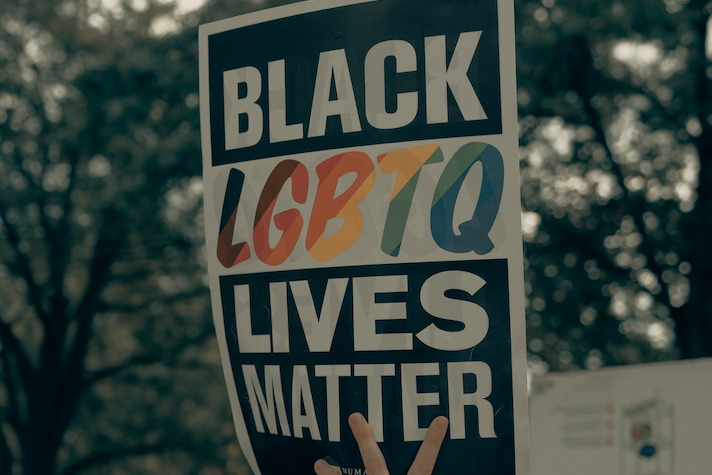
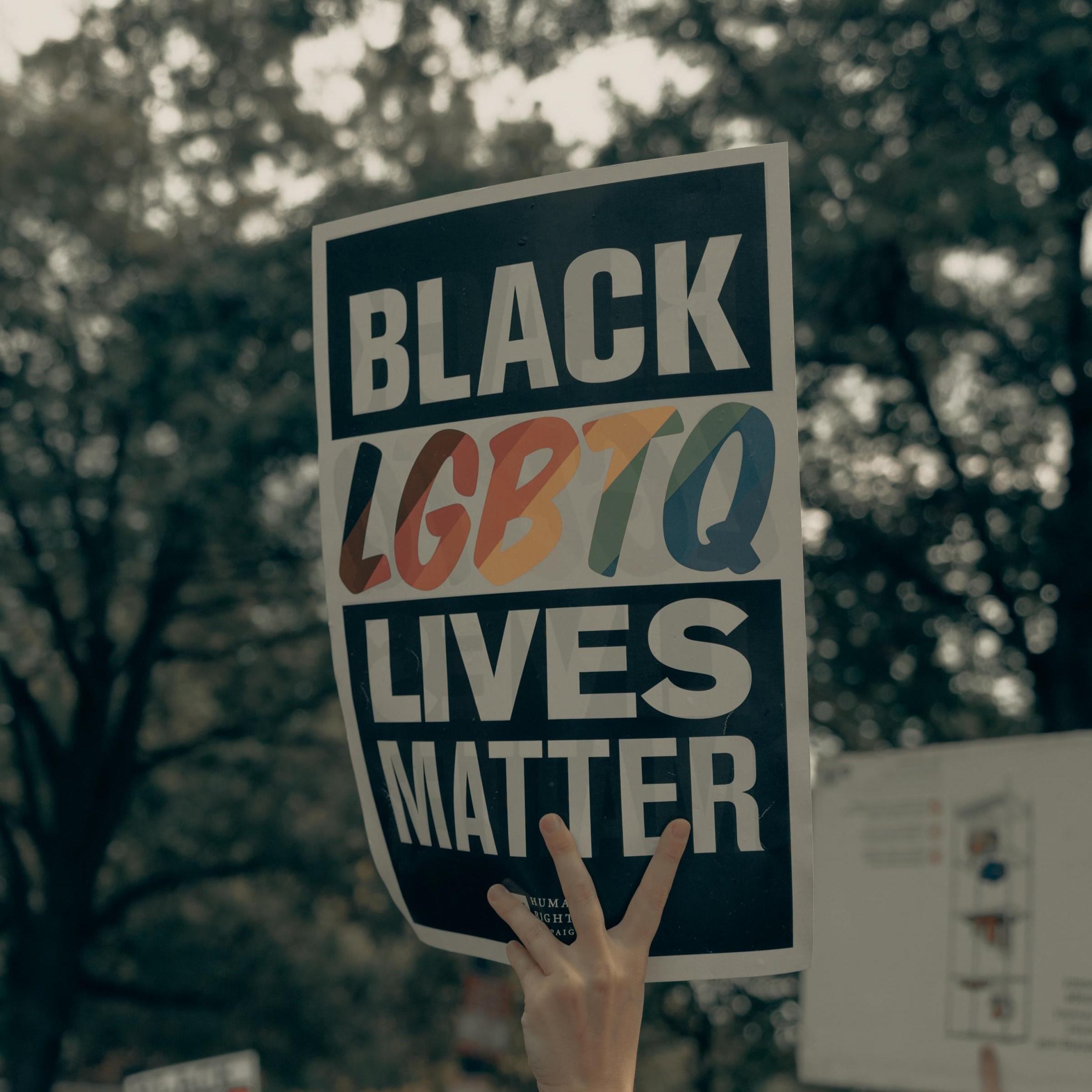
One of the great myths about life in the U.S. is the “bootstraps” theory, which implies that all you have to do is work hard, keep your nose clean and the rest will take care of itself. Sure, that has worked for some people over time, but the Horatio Alger story is more fantasy than fact. This is especially true in marginalized communities, including for LGBTQ people.
A history of self-reliance marked by violence
History is full of examples of communities of color, ethnicities and religious groups being excluded, only to go out on their own, rely on each other, become successful by any definition — and then be pulled down again, often with litigation or even violence. Jewish American spent decades building their communities, enduring acts of discrimination as far back as General Ulysses S. Grant’s expulsion of them from Kentucky, Mississippi and Tennessee during the Civil War. To President Abraham Lincoln’s credit, he quickly rescinded that order, though he was clear that he based the decision on constitutional grounds, not out of any sense of morality.
Black Americans spent decades building thriving communities, including “Black Wall Street” in Tulsa, Oklahoma, which fell to one of the worst race riots in U.S. history. Chinese-American communities were prey to similar atrocities, including an 1871 wave of lynching in Los Angeles. The list goes on and on: Native Americans, Japanese-Americans and Mexican-Americans have witnessed their communities being destroyed for no other reason but hatred.
The LGBTQ community has withstood a similar history during the decades leading up to Stonewall and, of course, during more recent times.
COVID-19 and its impact on LGBTQ citizens
Now, as COVID-19 has shuttered businesses and even forced some LGBTQ citizens back to the margins of society, they have discovered they, along with their organizations and businesses, have to rely on each other yet again.
Countless companies have contributed to the sense that the LGBTQ community is one that can be easily discarded. As one media strategist admitted to the digital marketing news site Digiday, the reality is that when many events during Pride Month had to go digital, it became “less tangible for brands to unite behind.”
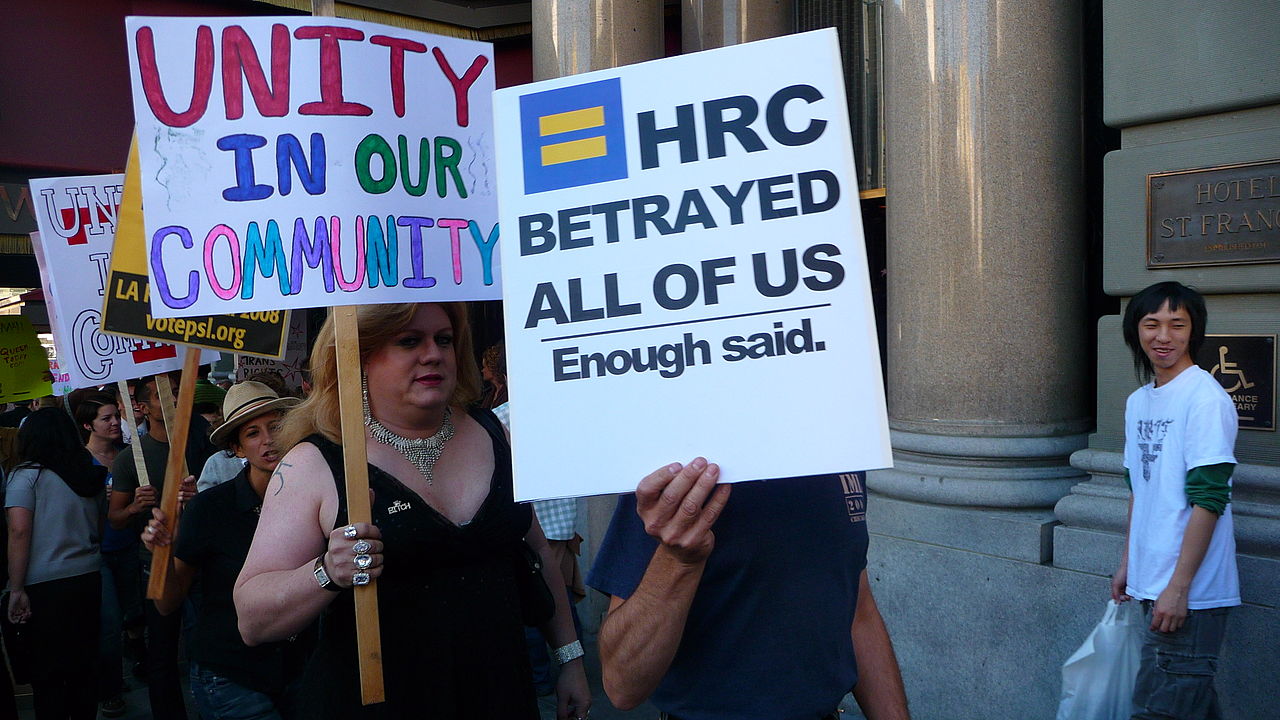
Photo: A 2008 protest resulting from what transgender activists said was the Human Rights Campaign’s exclusion of the trans community from both HRC’s events and political agenda. (Credit: Wiki Commons/Cary Bass)
Meanwhile, plenty of research exists showing that LGBTQ citizens have been experiencing a higher rate of unemployment, and concurrent risks such as food insecurity, than the general U.S. population. Ongoing stories about overt discrimination and microaggressions in the workplace show that despite pledges of diversity and inclusion, the day-to-day experience has often been one of straight white male privilege and exclusion.
The fact that the Black transgender community has coped with COVID-19’s impacts at an even harsher intensity shows that this is the time to step up, not fade out, when it comes to the business community’s support of all LGBTQ people.
Don’t “stand with” – instead, step it up
To that end, Nick Wolny, who frequently writes about entrepreneurship and tech, offers three simple yet powerful ways in which businesses, and individuals, can go beyond “allyship” during this time. Even though Pride Month is approaching its sunset this year, we don’t know what will happen next year and whether we will have to live with – or be free from – COVID-19 in the near future.
First, Wolny encourages supporting the Black Trans Lives Matter cause – whether it’s taking the time to learn about this community, or finding ways to support local nonprofits and businesses. Next, companies should use whatever platforms are available to highlight local LGBTQ organizations. Finally, Wolny insists that companies declare their commitments to the wider LGBTQ community.
As we’ve learned from the Black Lives Movement over the past several weeks, it’s not enough to “stand” with any community. Anyone can stand or take a stand. But making effort, much less investing in self-awareness, requires bold action and the harnessing of resources.
If you think superimposing the rainbow on your organization’s logo is a step, you and your organization are sadly mistaken. If anything, that will encourage stakeholders to do a little more digging and find out where you really stand on the LGBTQ community – as in, where your political donations are going and how your employees feel as part of the workplace, whether that’s in the office or virtually.
Image credit: Clay Banks/Unsplash
Pride Without Parades: What the Fight for LGBTQ+ Inclusion Means in 2020


Pride Month is observed every June to commemorate the Stonewall uprising of 1969, a tipping point for what was then called the Gay Liberation Movement. But as the coronavirus pandemic continues to derail parades and other large celebrations and the ongoing Black Lives Matter protests shine a renewed spotlight on systemic racism and police brutality in the U.S., this year feels different from most that came before it.
For many, it begs the question: What does Pride look like without parades? And more importantly, what does it mean in today's context?
Some may see these issues — the push for LGBTQ+ equality, the movement for Black lives and the fight against a deadly virus — as unrelated, but experts insist they are closely linked.
At a webinar hosted earlier this month by the strategic advisory firm Brunswick Group, experts shared their perspective about the future of Pride, what it means in the context of the Black Lives Matter movement and the COVID-19 pandemic, and how companies can meaningfully support LGBTQ+ people during this unique time in our history.
Pride, Black Lives Matter and COVID-19: Seizing the moment to demand equality
It's not too challenging to make the surface connection between the LGBTQ+ rights and Black Lives Matter movements. The aforementioned Stonewall uprising began as a riot and continued into a days-long demonstration against police brutality and the criminalization of queer people simply for existing in queer spaces.
But the connection goes back further than that, said Dr. Eric Cervini, a historian of LGBTQ+ politics and culture and a renowned authority on pre-Stonewall gay activism.
"The totality of Pride was borrowed from the Black Freedom Movement," Cervini said. His book, "The Deviant's War: The Homosexual Vs. the United States of America," released earlier this month, details some of these connections — including the story of Frank Kameny, known as the "grandfather" of the gay rights movement.
Kameny was a Harvard-educated astrophysicist who worked on government projects that laid the groundwork for the U.S. space program — that is, until his employers learned he was gay and dismissed him from his position.
He went on to become the first openly gay man to challenge his dismissal in the U.S. Supreme Court. He was also the first to organize a gay rights demonstration in front of the White House, modeled after the work of Bayard Rustin, an openly gay Black man who was the chief architect of the 1963 March on Washington at which Dr. Martin Luther King, Jr. declared, "I have a dream." His marches laid the groundwork for the Stonewall uprising, and all were firmly based in the fight for racial justice, which continues to this day, Cervini said.
With respect to the pandemic, we know that racial and sexual minorities — including Black and LGBTQ+ communities — are at particularly high risk for contracting and dying from COVID-19. Along with heightened risk for contracting the virus, coronavirus-related job loss and stay-at-home orders can force LGBTQ+ people — particularly youth — to shelter in place in homes that are not supportive of their gender or sexual identities.
"There are a host of challenges that have come about as far as folks staying in homes that are unsafe," said Adalphie Johnson, program director at SMYAL, a nonprofit focused on empowering LGBTQ+ youth in Washington, D.C., as change agents in their community. "It has definitely increased the rates for young people experiencing homelessness or the risk for individuals experiencing homelessness."
Mark Seifert, an openly gay partner at Brunswick Group and co-chair of the firm's cybersecurity and privacy practice, encouraged business leaders to seize the moment of COVID-19 lockdowns and attention on racial justice as an entry point to push for greater equality: "If ever there was a time to challenge preconceived notions and challenge the current state, it's now," he said. "It's now when we're all fighting a virus. It's now when we are taking a serious look at our relationship with the Black community. Let's rip off some of the old stuff and start anew."
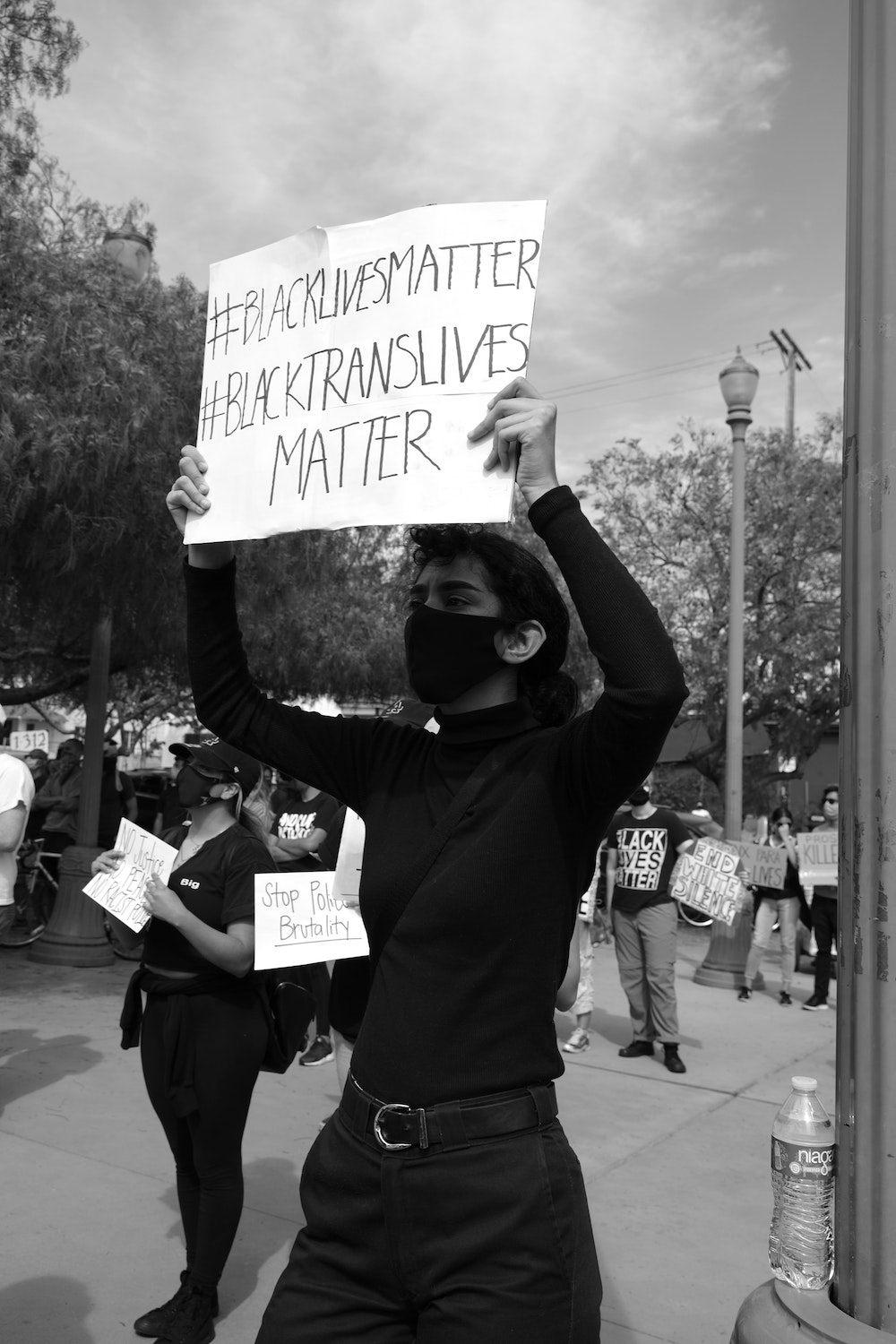
Demonstrations give way to a renewed focus on Black trans lives
Among many other things, the ongoing Black Lives Matter demonstrations have cast a renewed spotlight on the dangers facing transgender people of color, particularly Black trans people. During the week of June 13, two Black trans women — Riah Milton of Liberty Township, Ohio, and Dominique “Rem’Mie” Fells of Philadelphia — were murdered, fueling the push to protect Black trans lives, but some say the broader movement still isn't giving the issue enough attention.
"Not enough is being said about Black trans lives," said Rikki Nathanson, assistant to the executive director at Casa Ruby, a bilingual and multicultural LGBTQ+ organization in the Washington, D.C. metro, led by trans women of color. "In the year that I've been at Casa Ruby, three girls were brutally murdered in D.C. The response from the police, the authorities and the people in the know was shameful, to say the least."
Nathanson, who emigrated to the U.S. from Zimbabwe, knows what it's like to be threatened with violence due to her gender identity. In 2019, she won a landmark case against the government of Zimbabwe for unlawful arrest, malicious prosecution, and emotional distress after she was violently arrested by police and subjected to a strip search for using the women's restroom at a bar in the country's second largest city.
"I've experienced back home firsthand what it's like to be a trans woman who has been persecuted," she said. "But to come and live in the United States capital and see the conditions for young Black trans women that I'm seeing now is extremely appalling."
She and Johnson of SMYAL work to protect and empower trans people of color in Washington, D.C., but both say they need more resources to support their work — and business can help.
More than rainbows: What it means for business to lead the push for LGBTQ+ equality
By and large, U.S. companies have broadened their public support for LGBTQ+ equality, but in recent years, many of their public statements have rung hollow. In researching trends on platforms like Google and Twitter, Open For Business, a corporate coalition that advocates for LGBTQ+ rights, observed a marked uptick in the term "pink washing."
Sometimes called "rainbow washing," the term refers to disingenuous support for LGBTQ+ rights on the part of major corporations. These companies may release a Pride-themed product every June, change their social media avatars to feature the rainbow flag, or sponsor a float in their city's Pride parade, but they fail to create workplaces that are inclusive for LGBTQ+ employees or advocate for policy change that promotes equality in the countries where they operate.
"A lot of people are beginning to question what companies really mean whenever they are saying that they're LGBT inclusive or marching in Pride parades," said Drew Keller, global program director for Open For Business.
Cervini, the LGBTQ+ historian, agrees. "I don't think slapping a rainbow on a product or a float is going to be enough anymore," he said. "The moment it becomes about branding or a corporate image, it becomes a disservice to queer employees. You need to be asking: What can we do with our budgets? What can we do with our platform? Then you need to hand over the mic to organizations that have been doing the hard work for years."
Those groups include SMYAL and Casa Ruby, and Nathanson and Johnson have some ideas for how business can get involved.
"The first part is money, obviously, but we also need to have support," Nathanson said. "Join in campaigns, for example. Stand up and speak up with us. Companies need to think strategically how best they are positioned in order to be able to help us as organizations. We need the shoulder to lean on."
"You have to be willing to have the difficult conversations, the ones that make folks uncomfortable," Johnson added. "You have to be able to unpack and un-learn so many systemic ways of oppression, privilege and power that we don't even realize exist. We need to relearn and identify a new way of accepting, a new way of being engaged, a new way of shifting power and privilege so that ... regardless of our identity, we all will experience and know what privilege and power means."
Image credits: Tanushree Rao, Mercedes Mehling and Mike Von via Unsplash